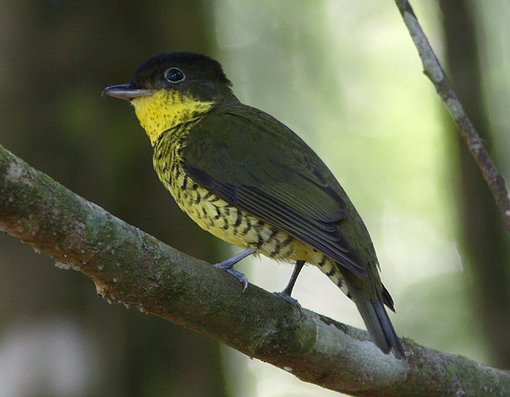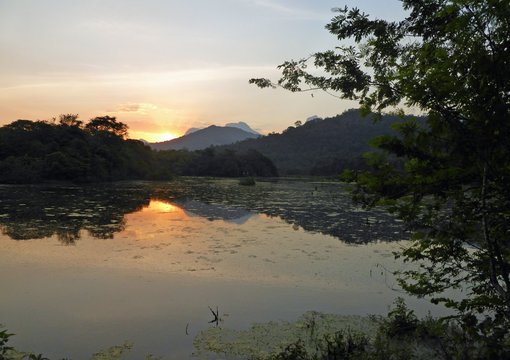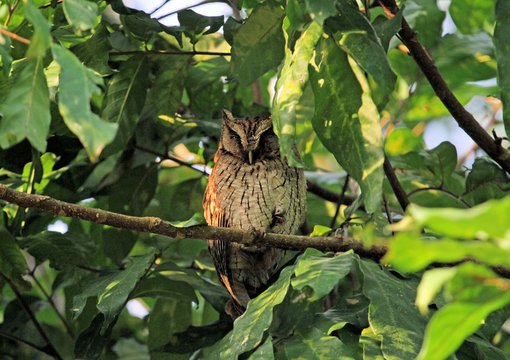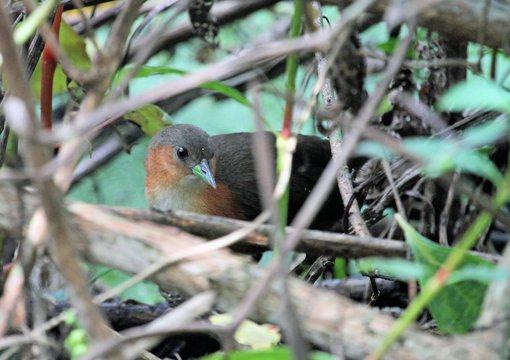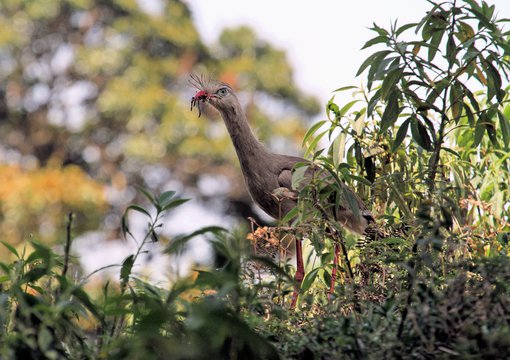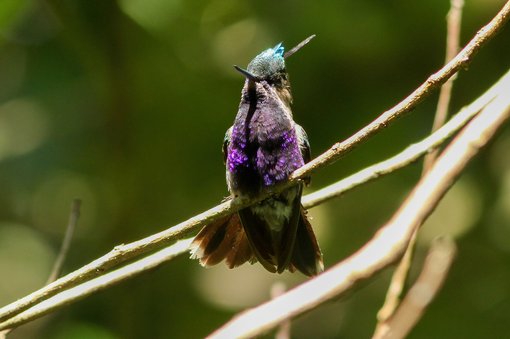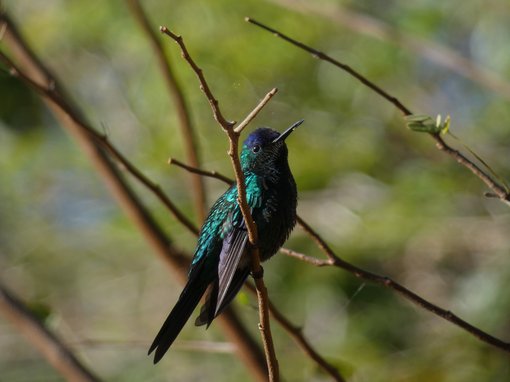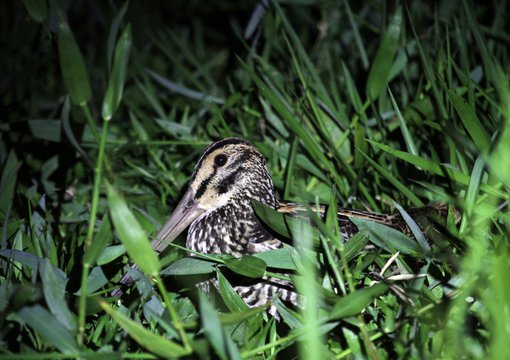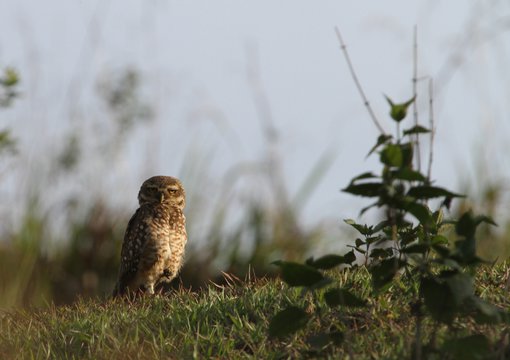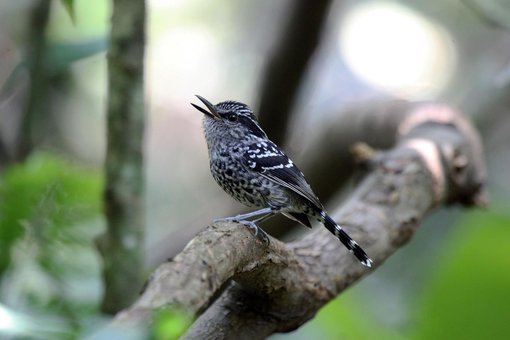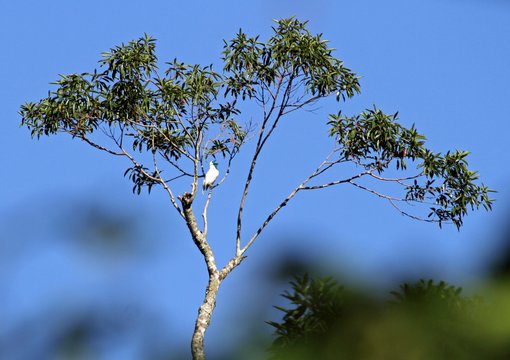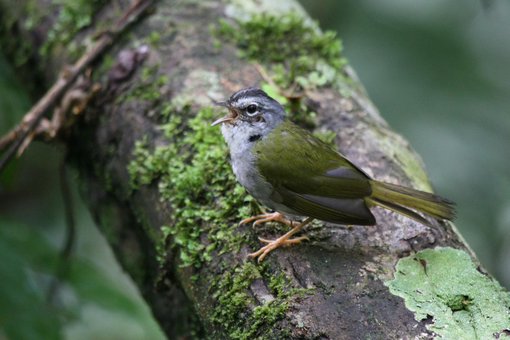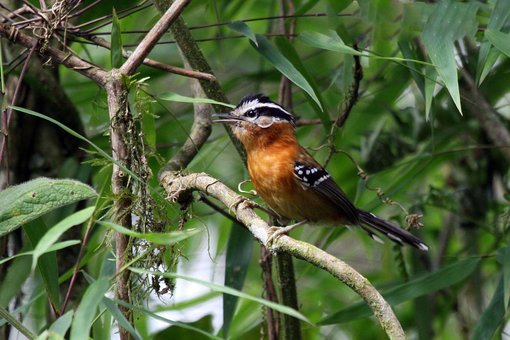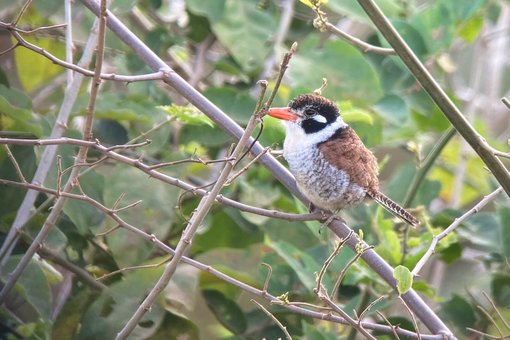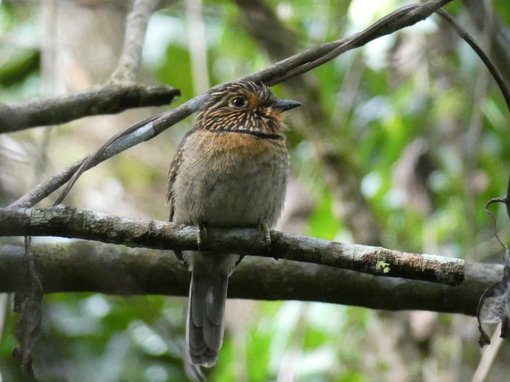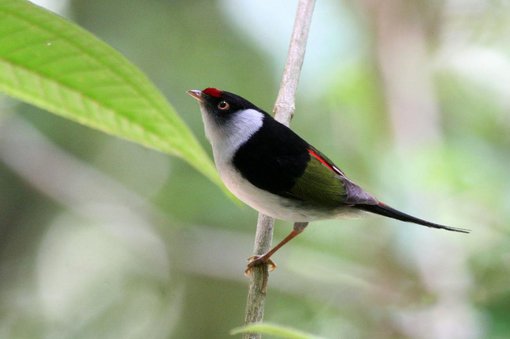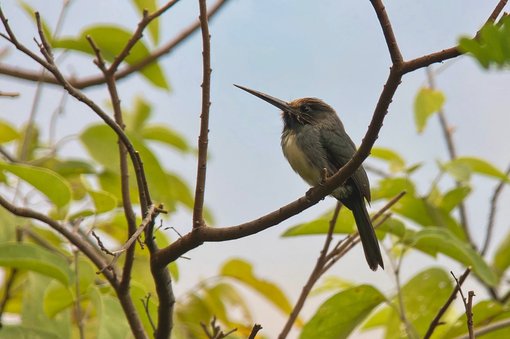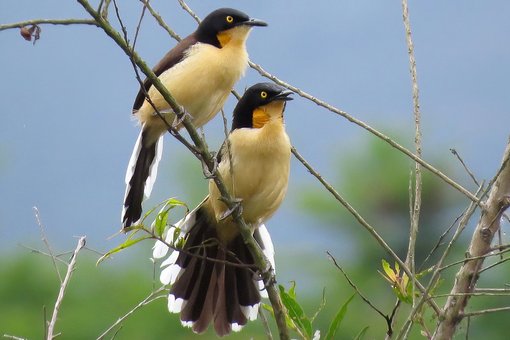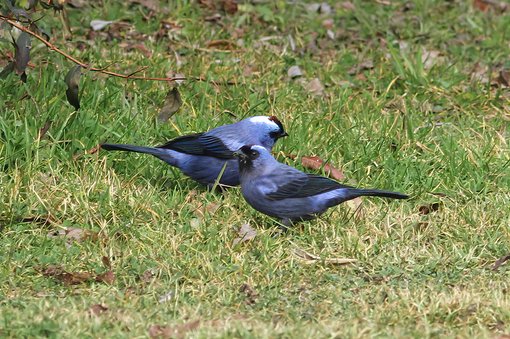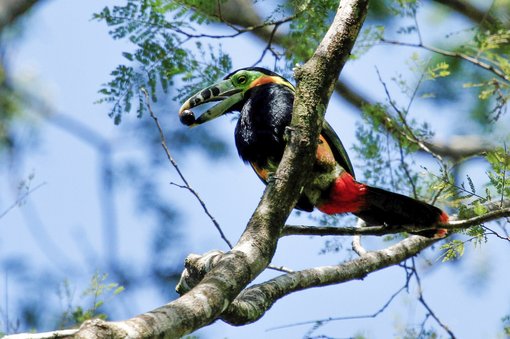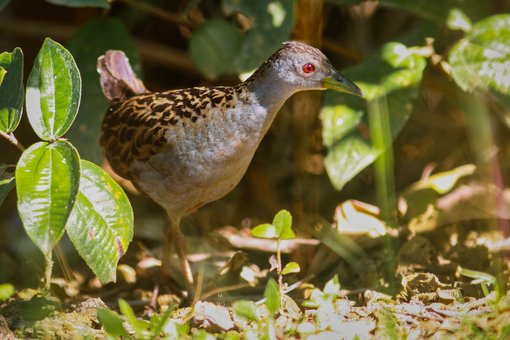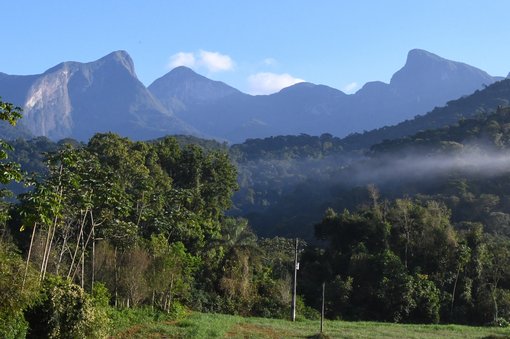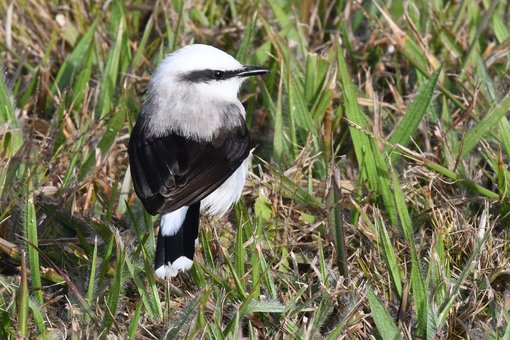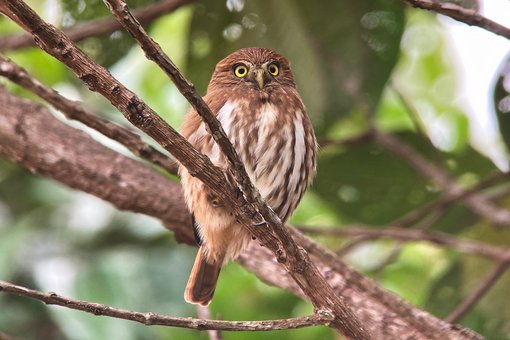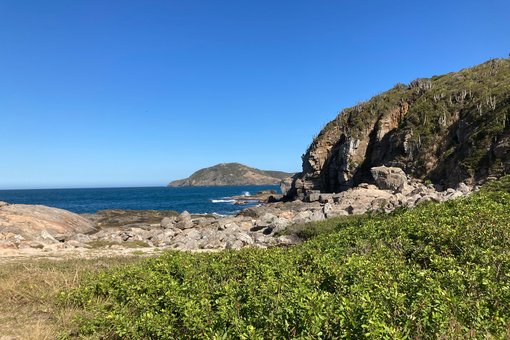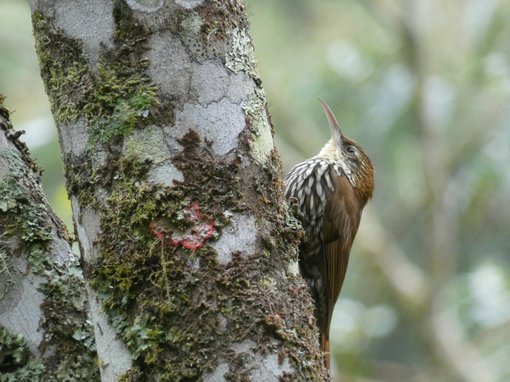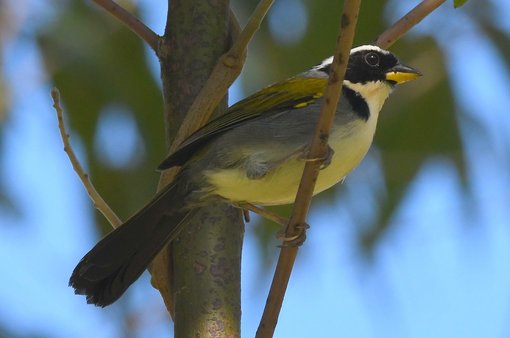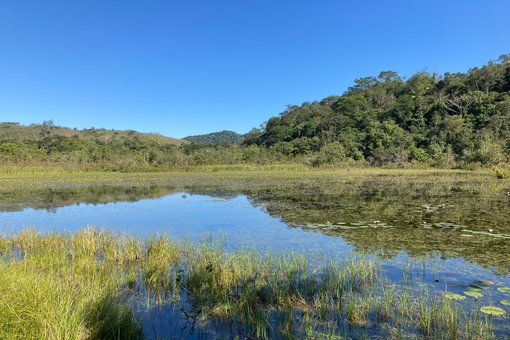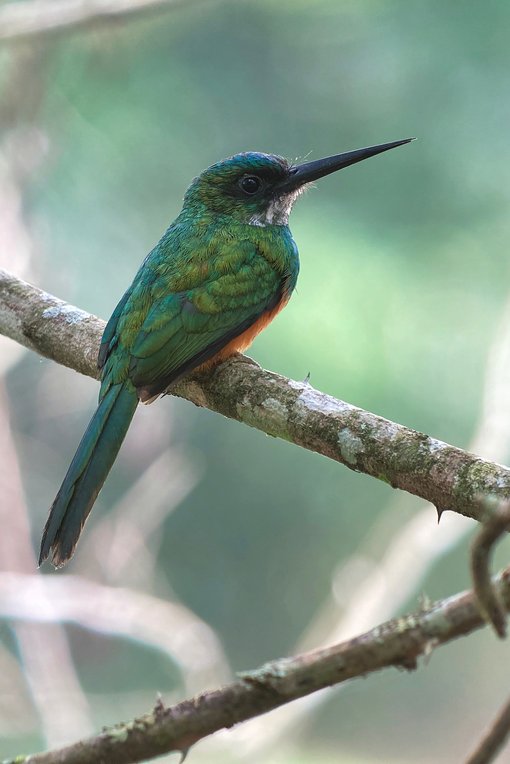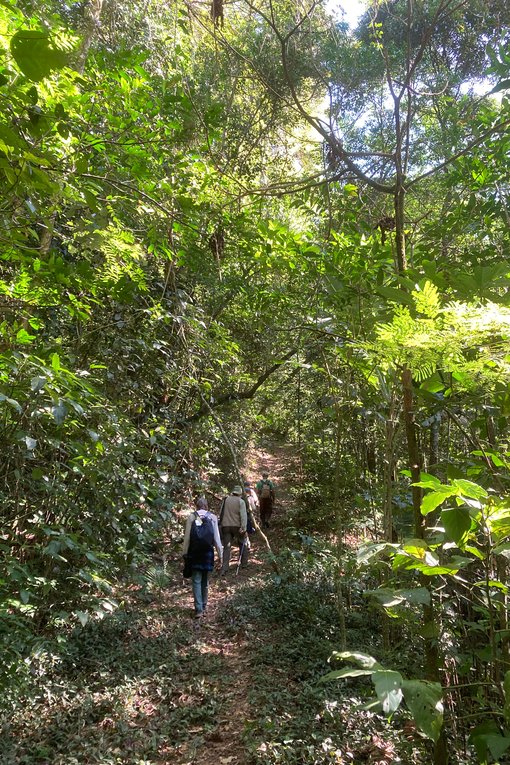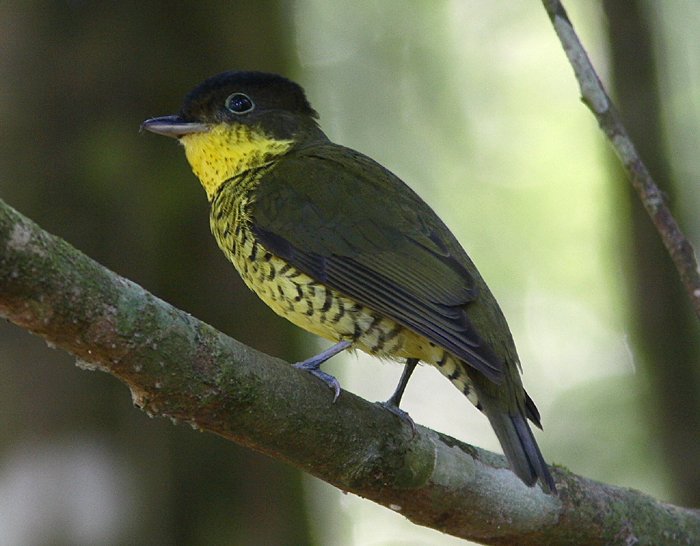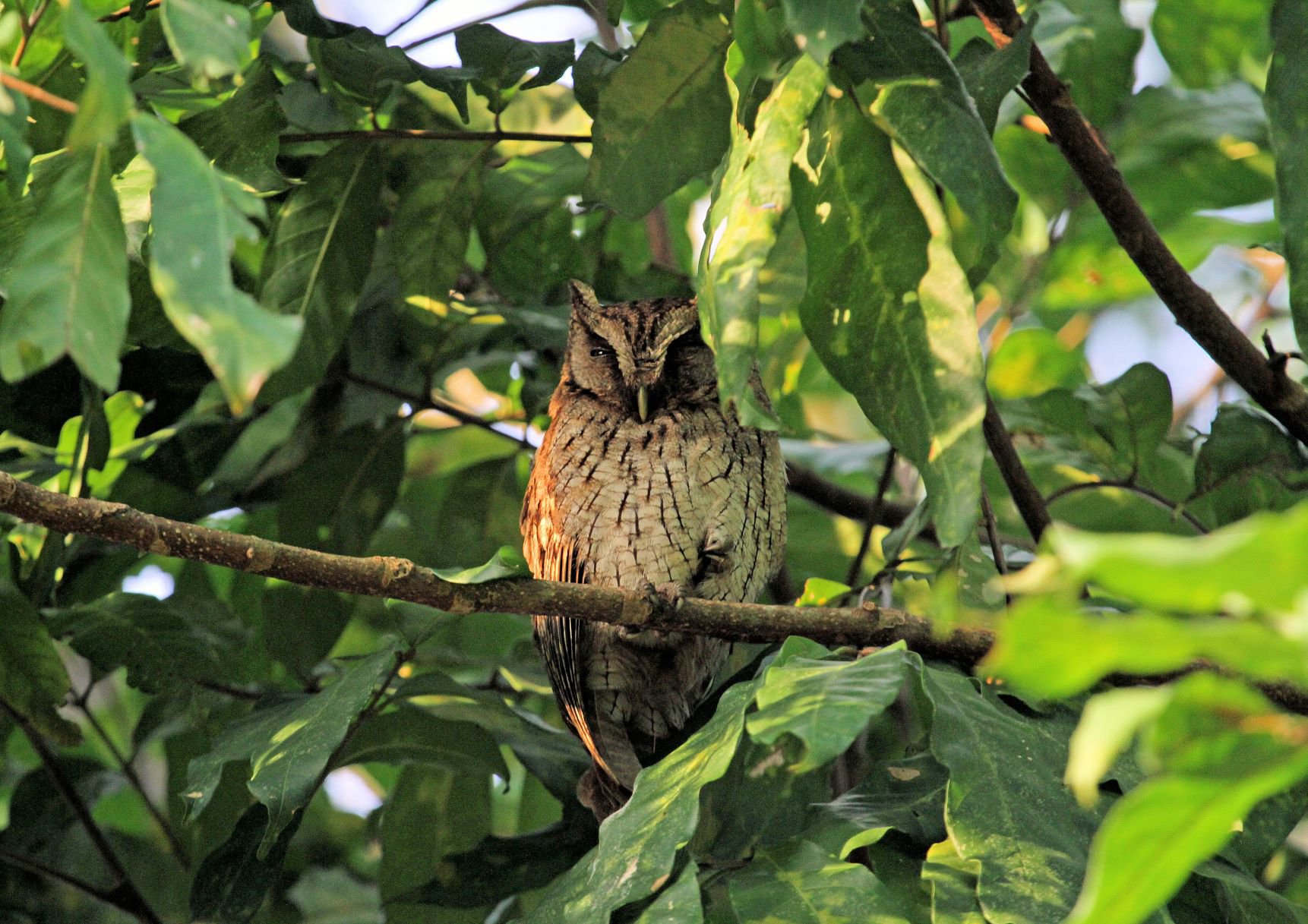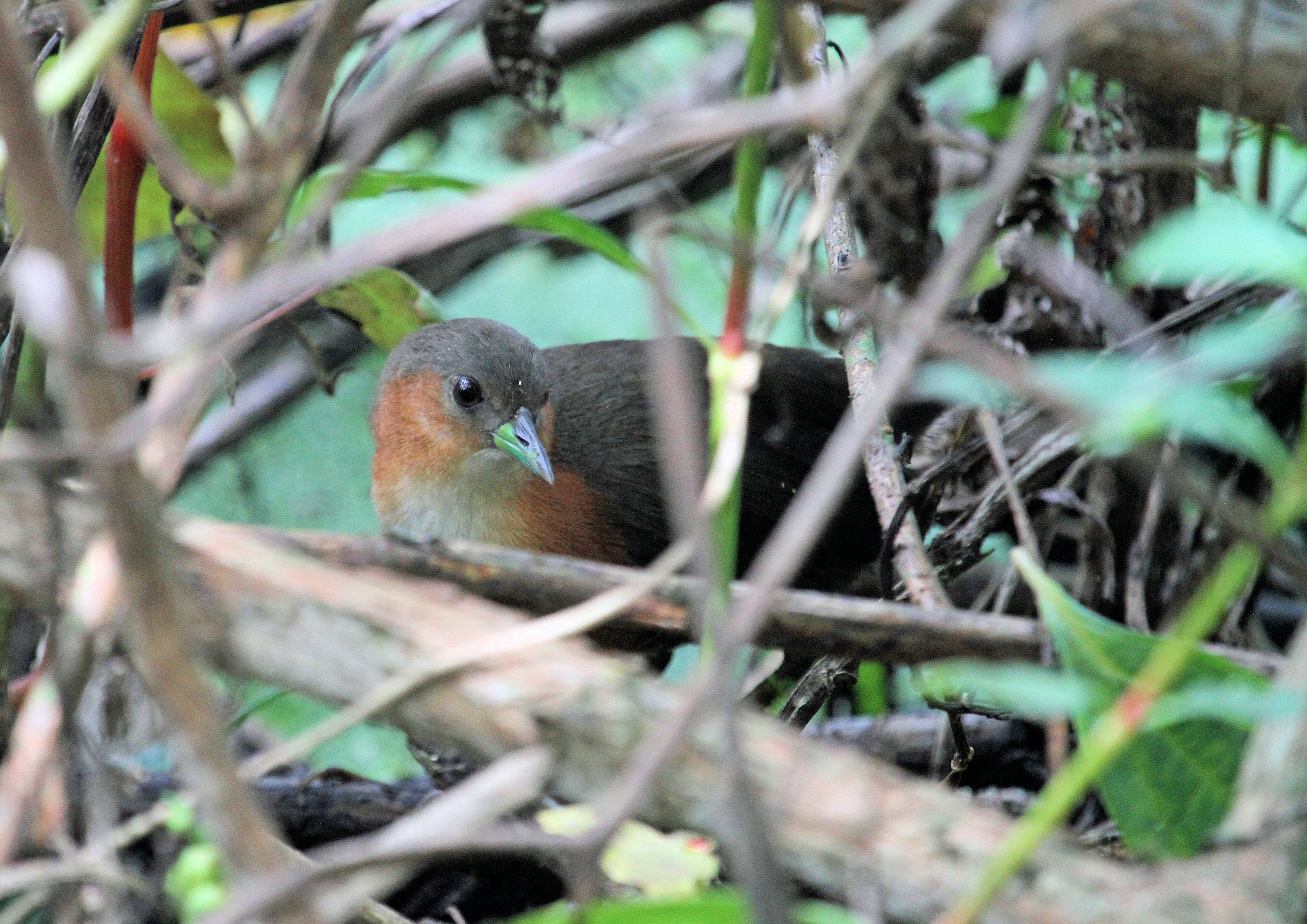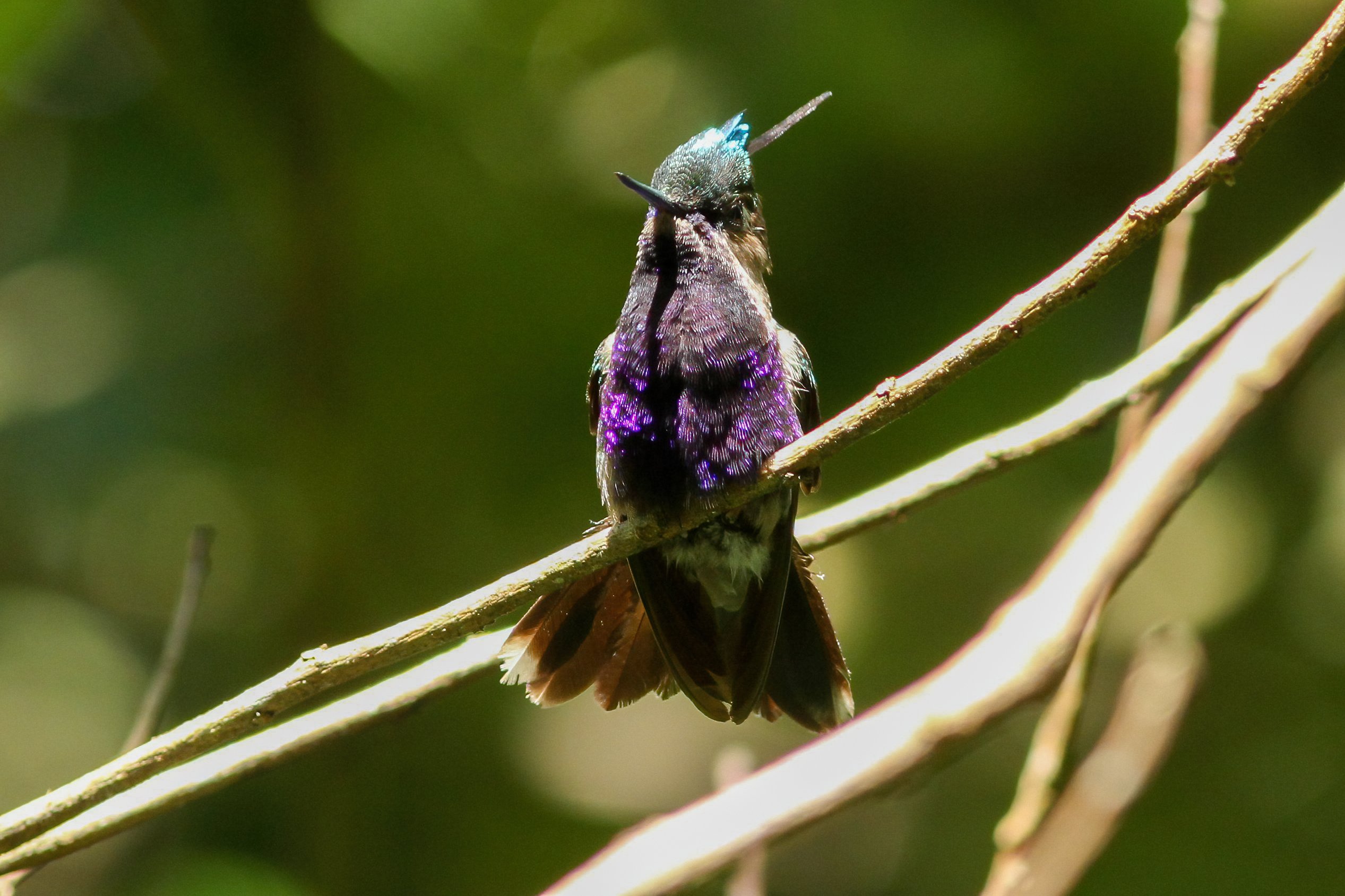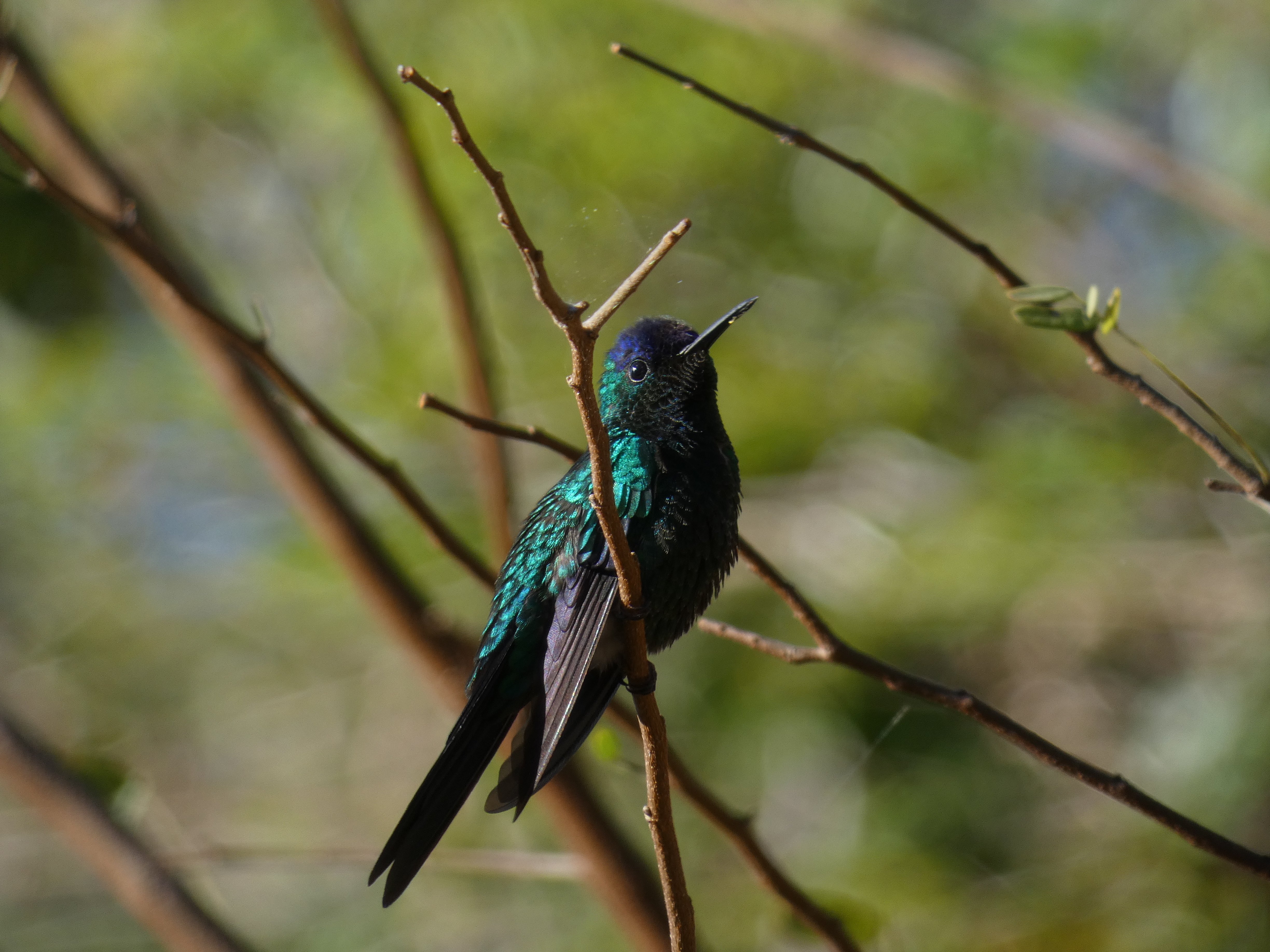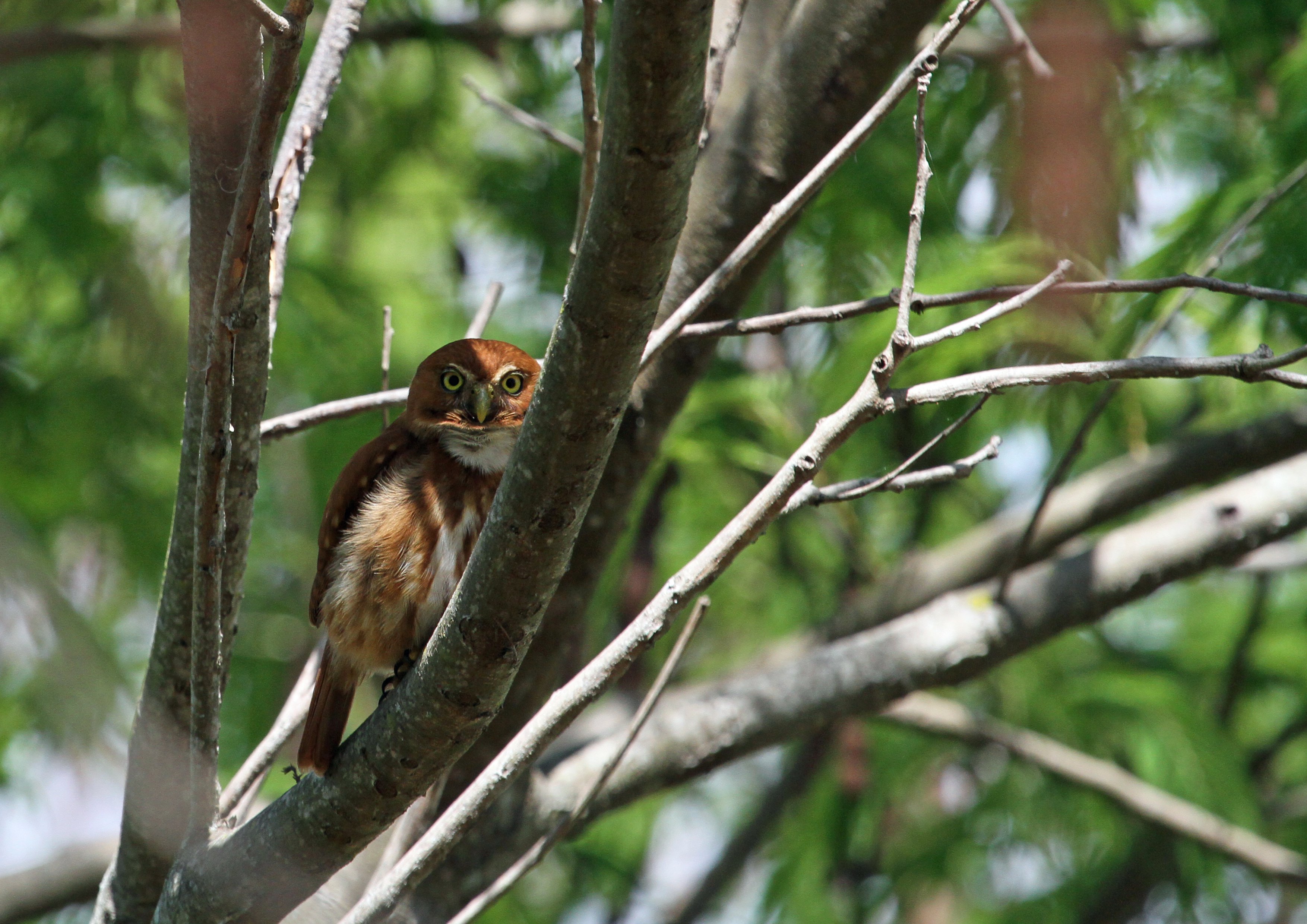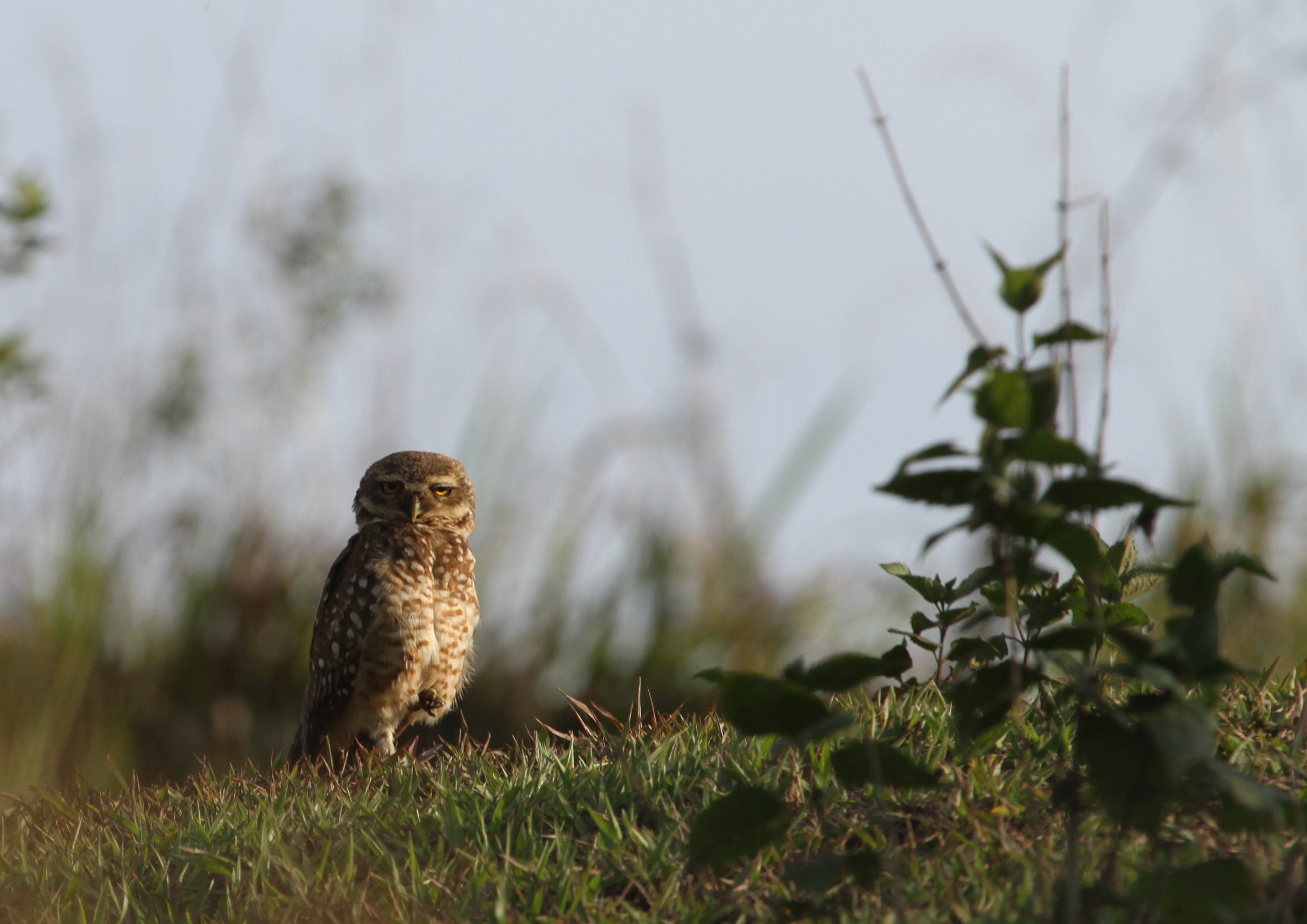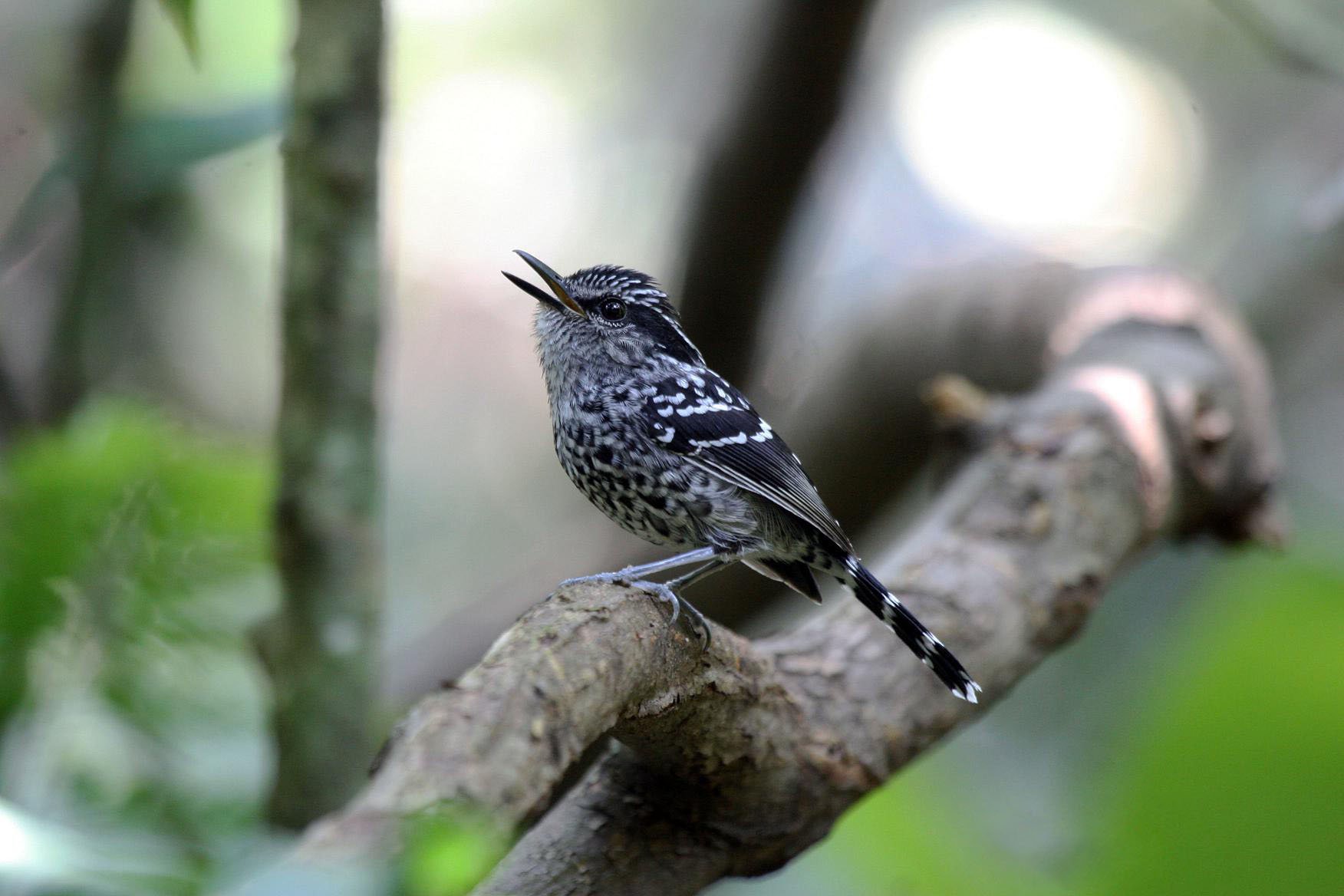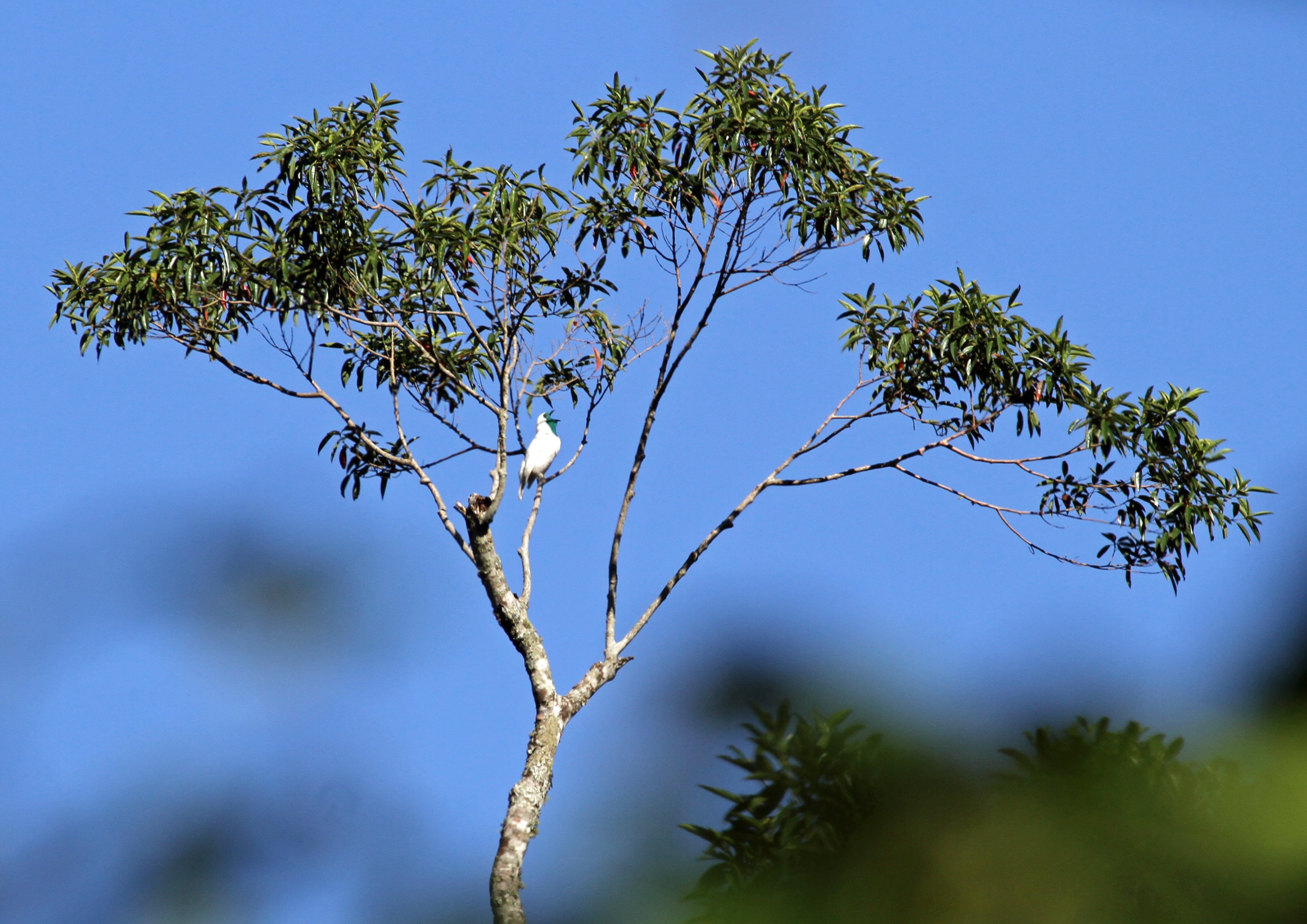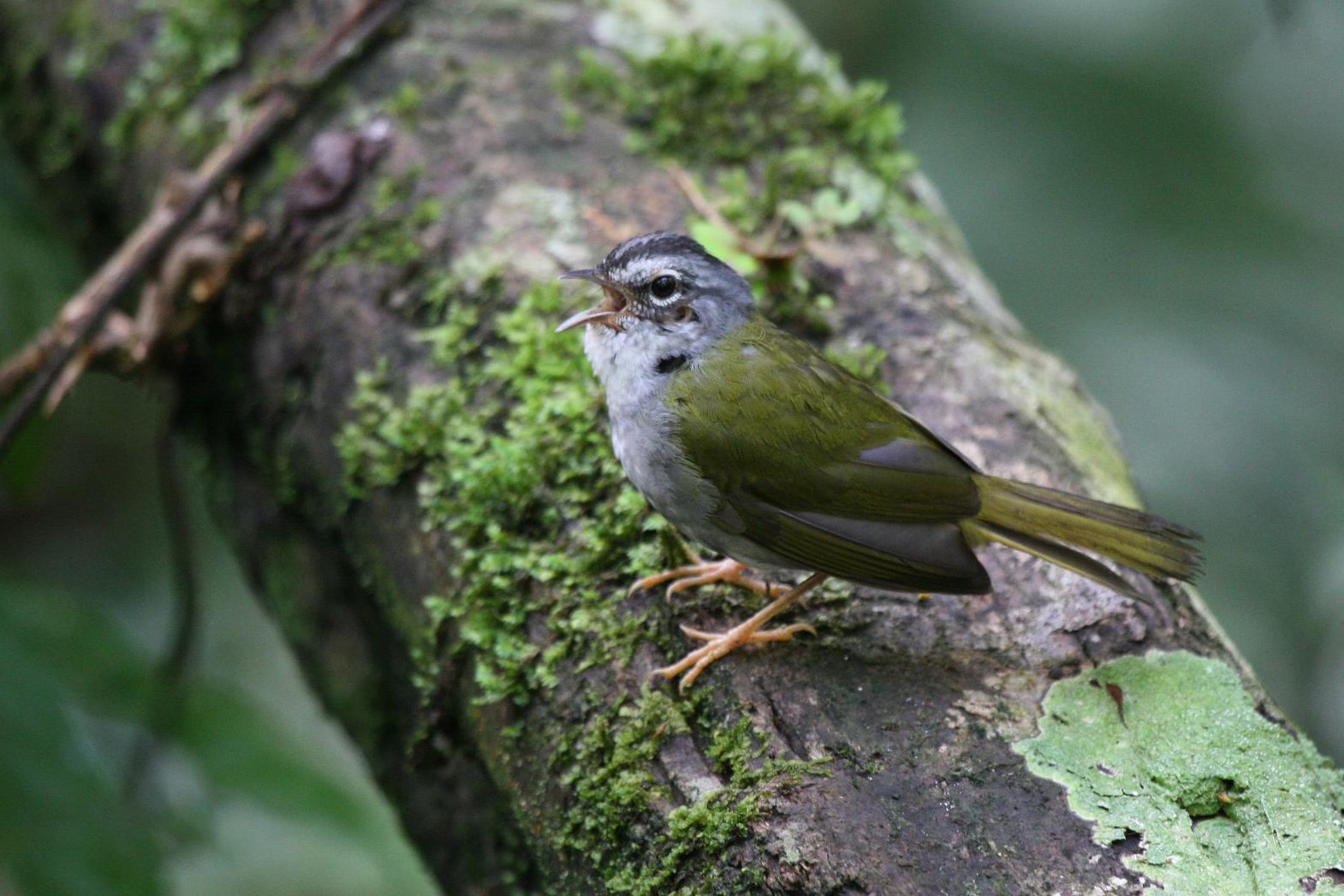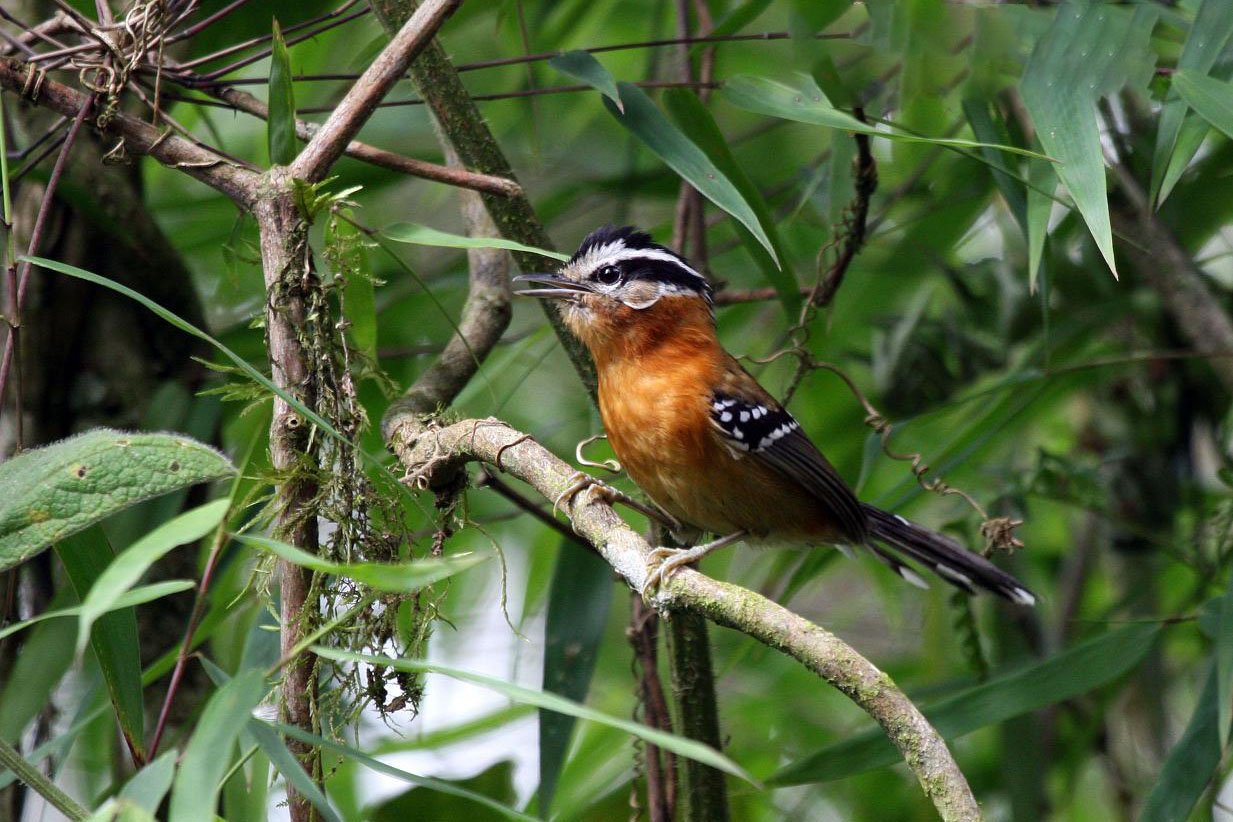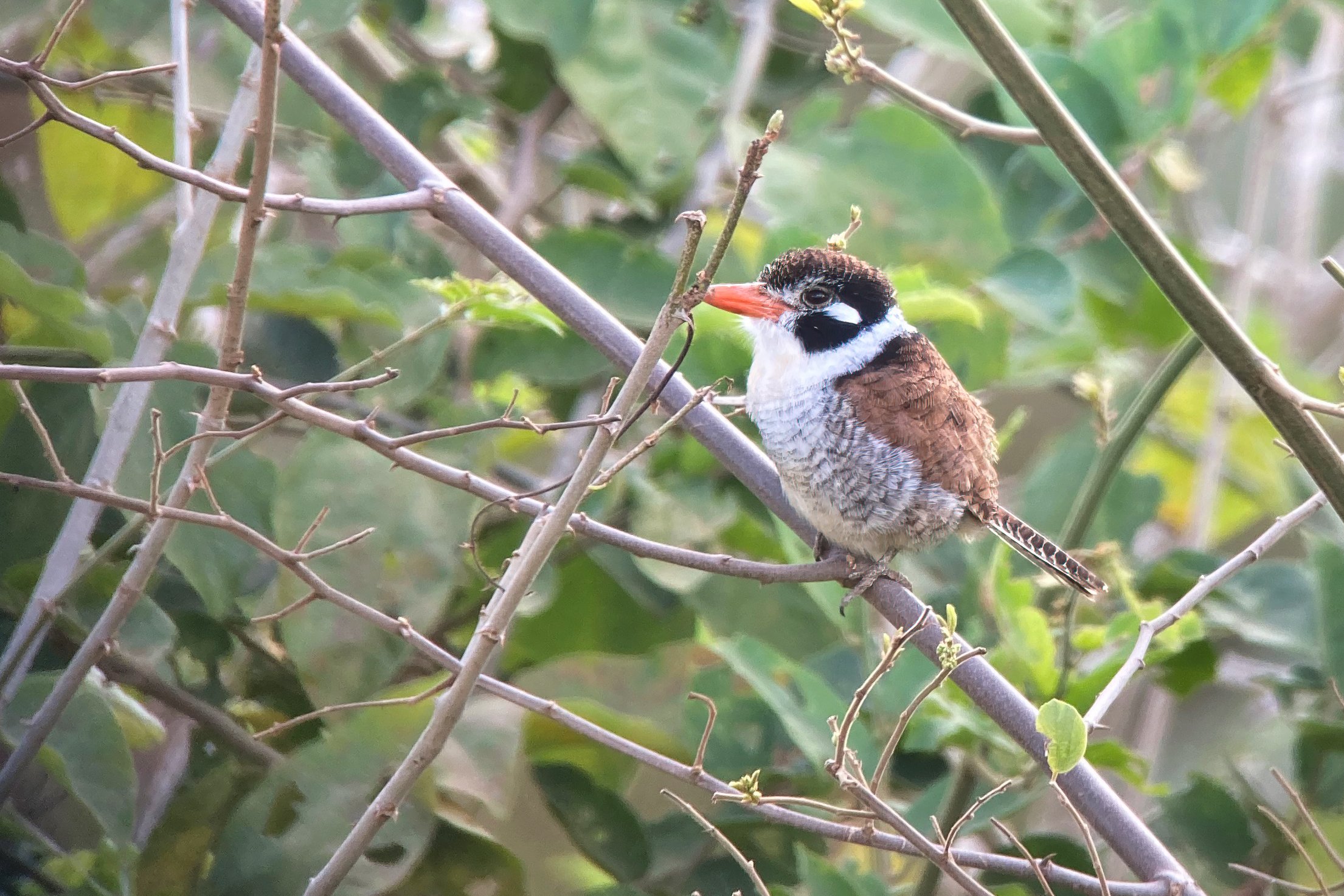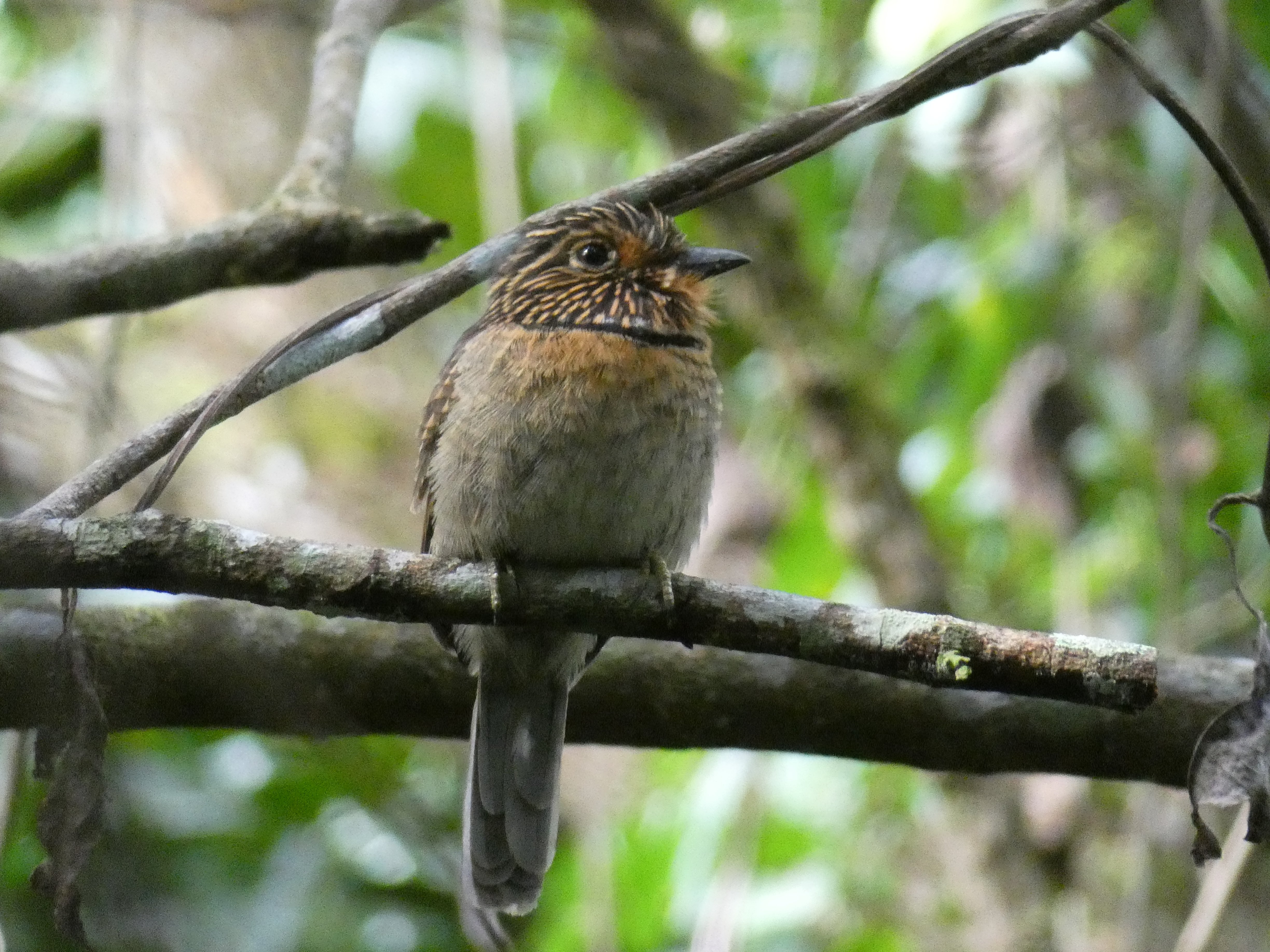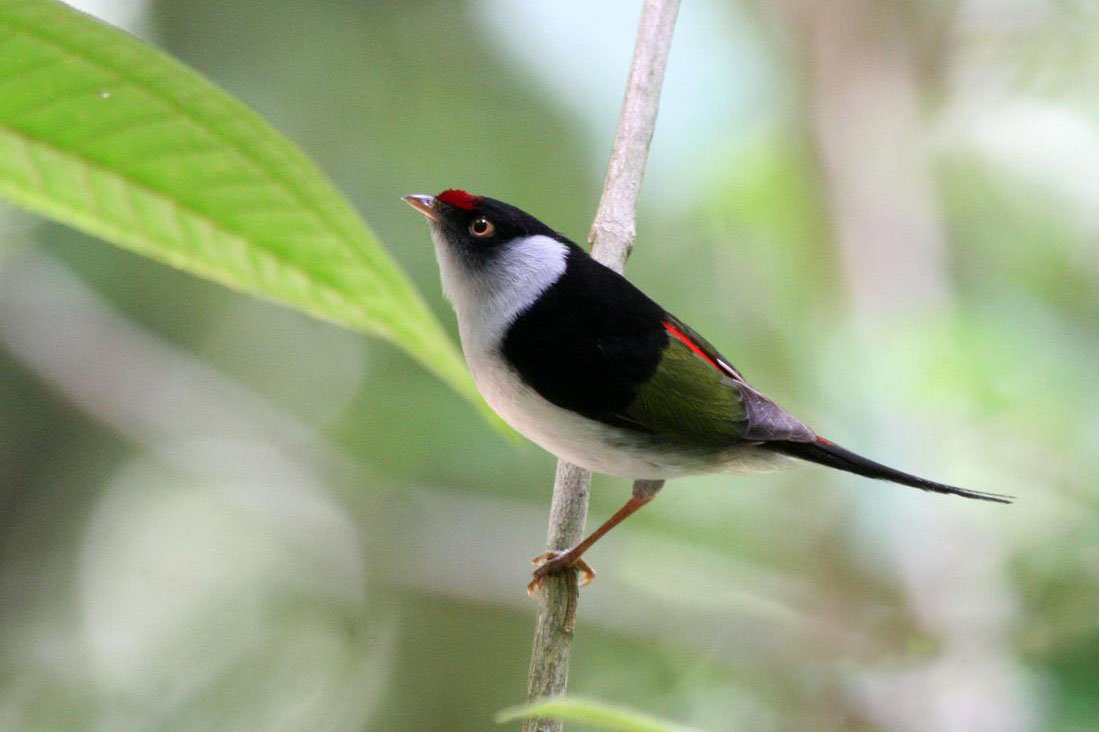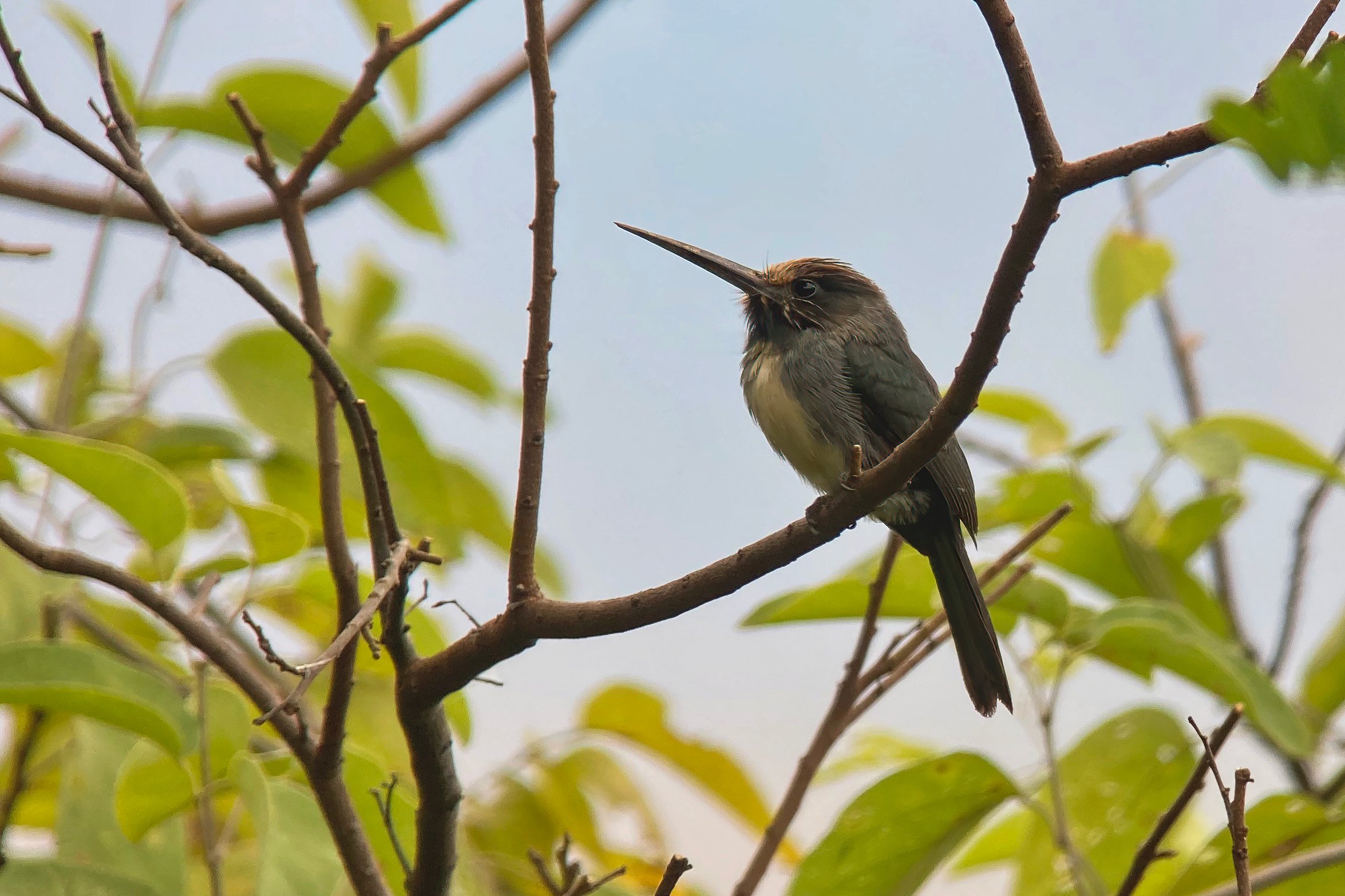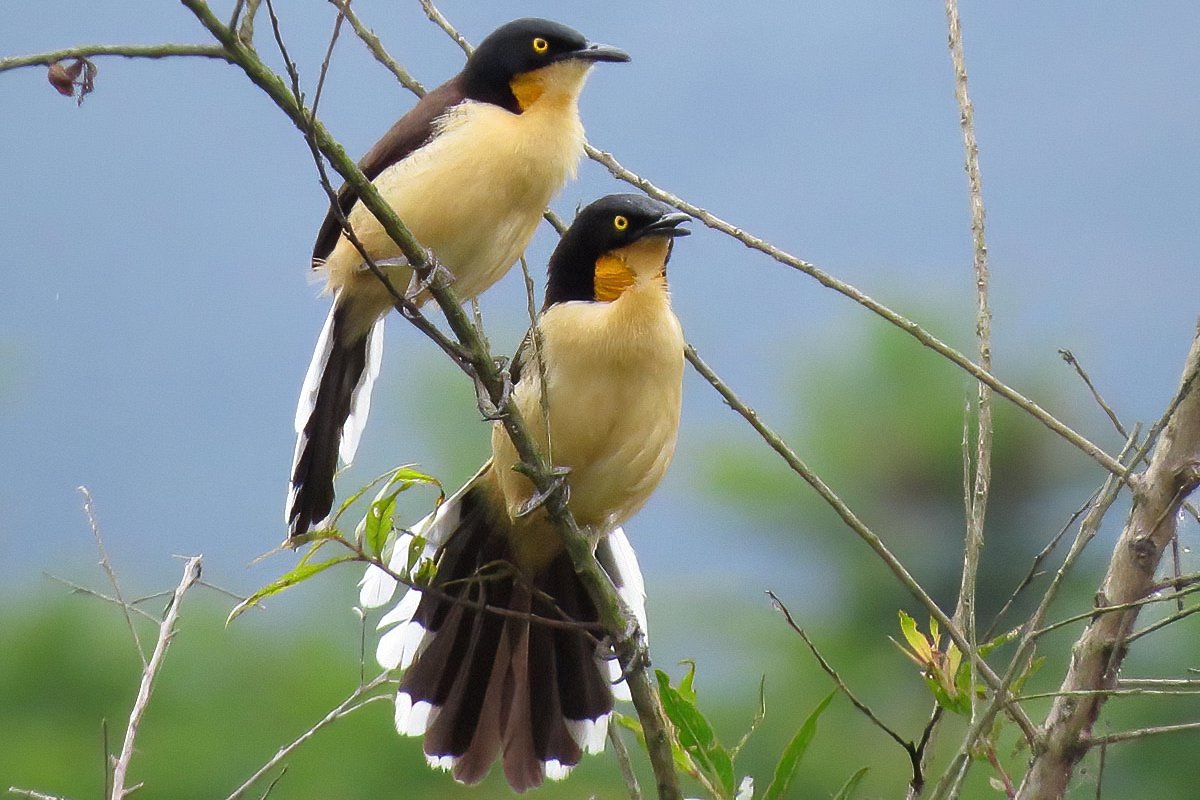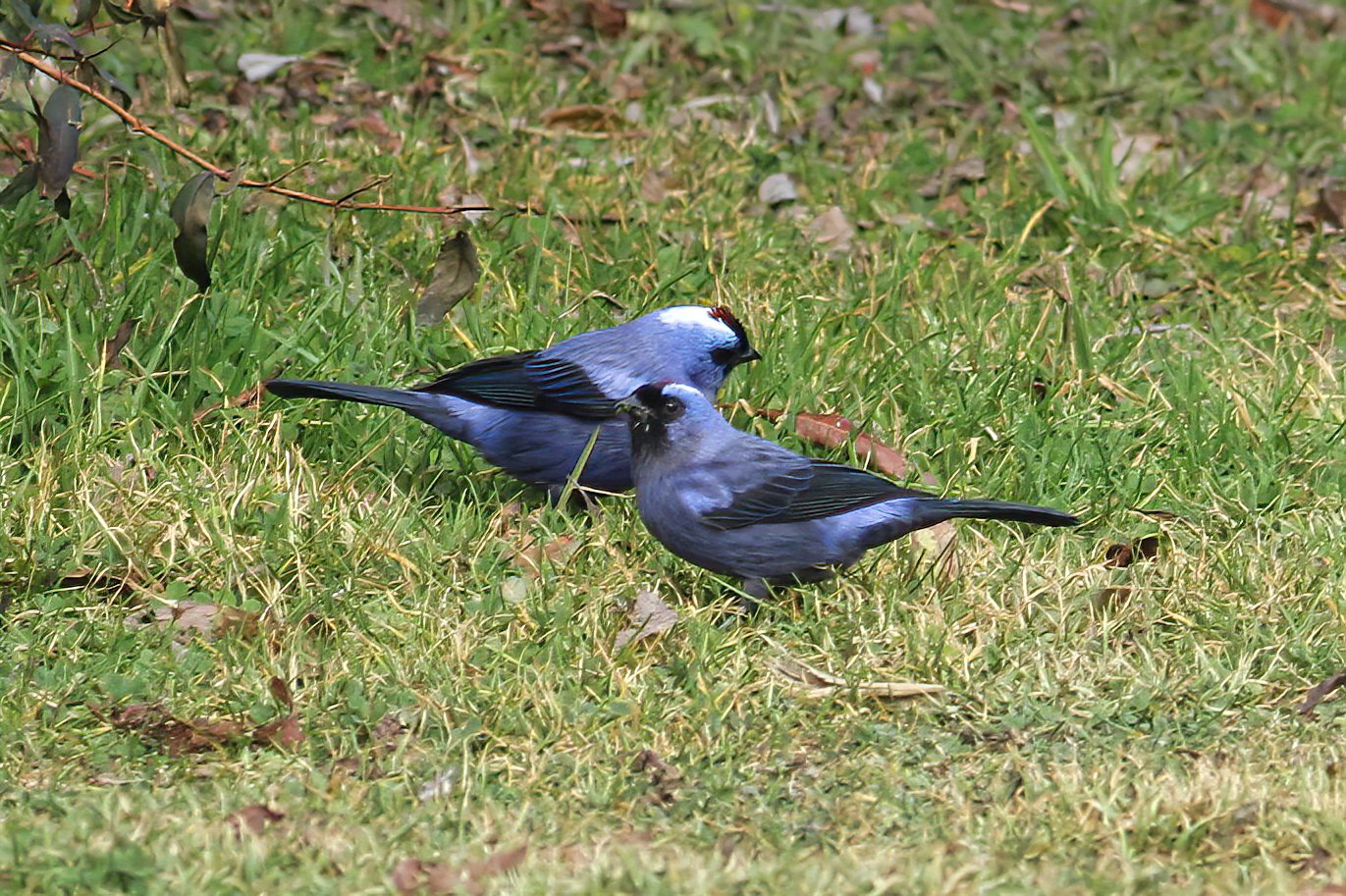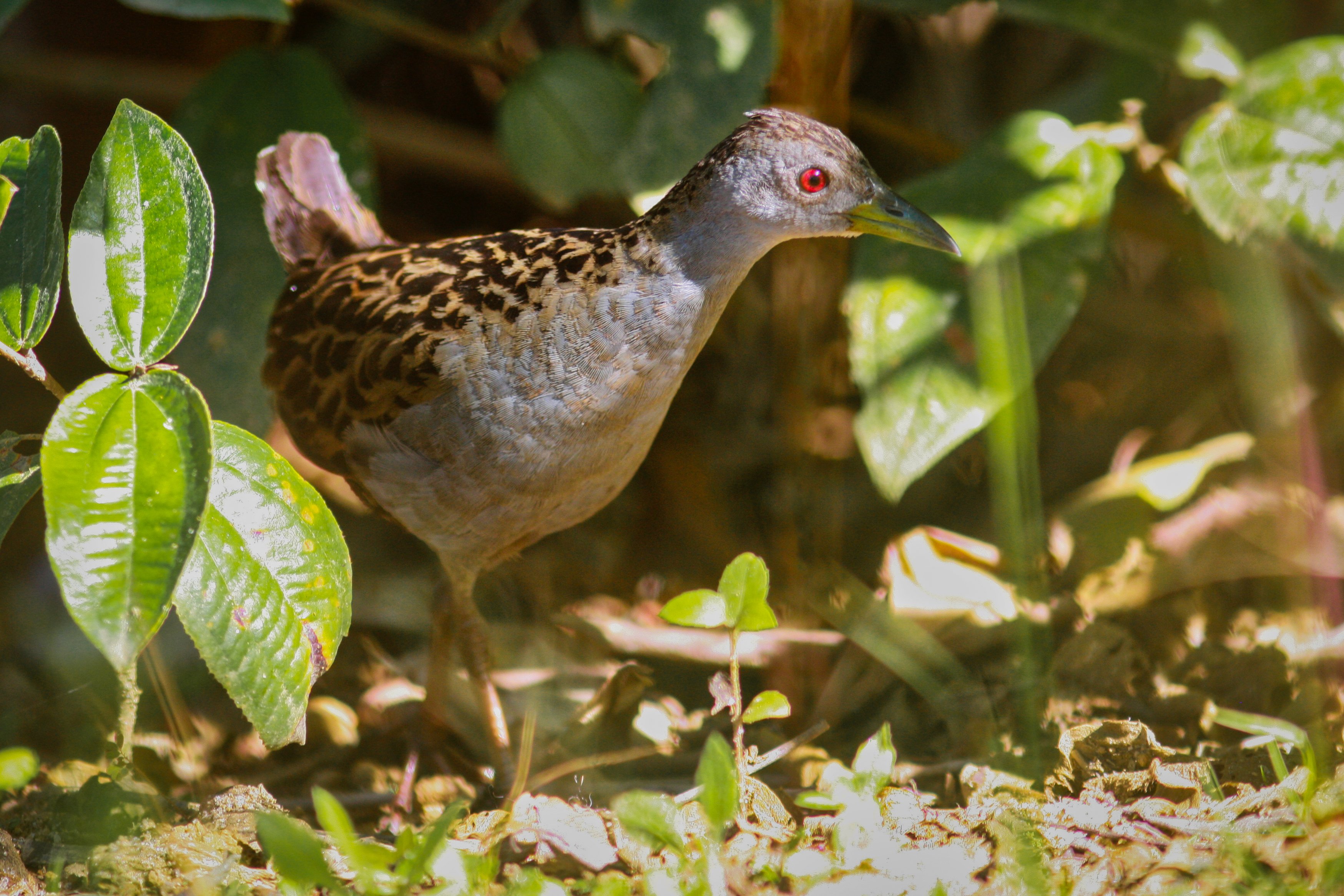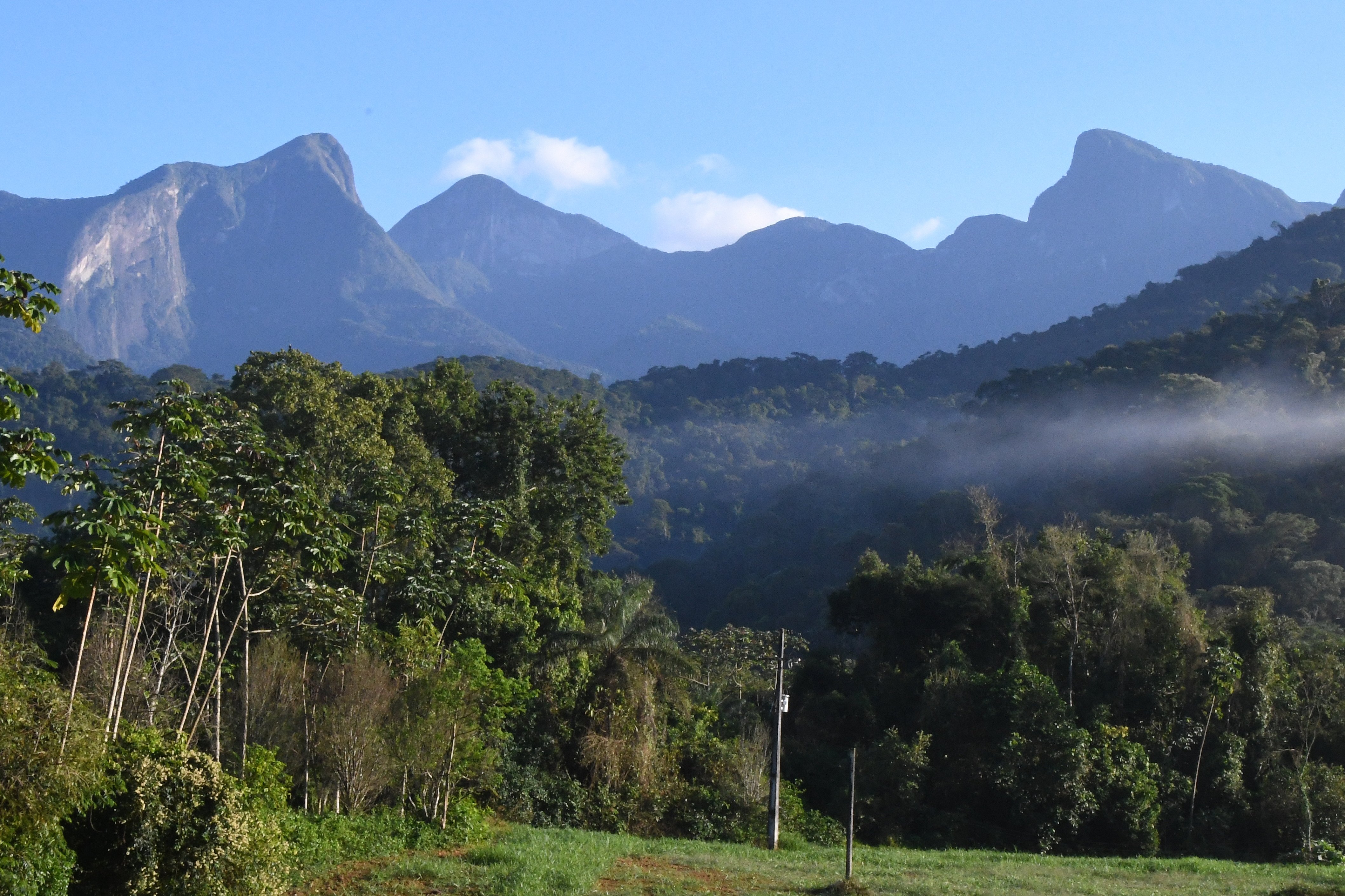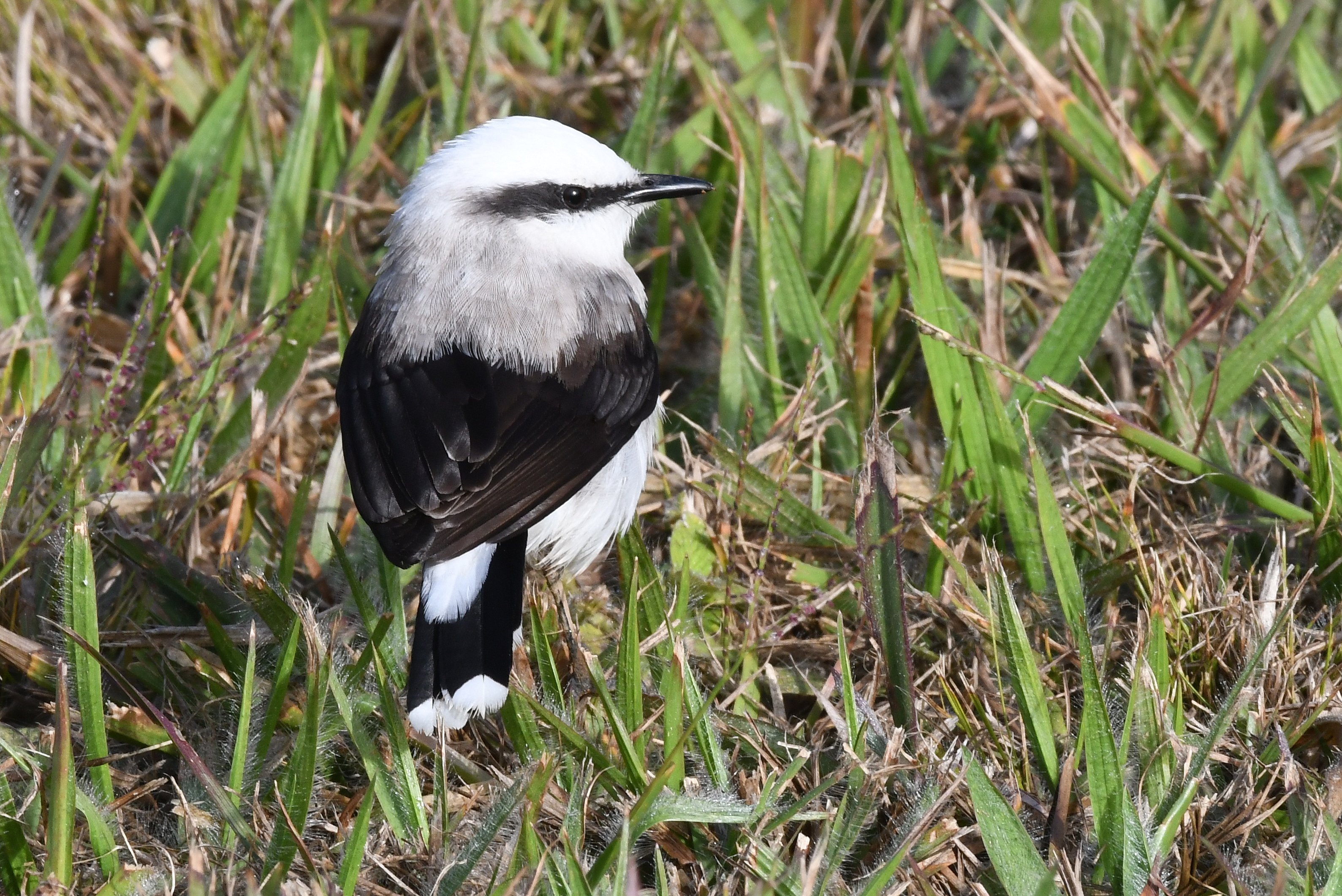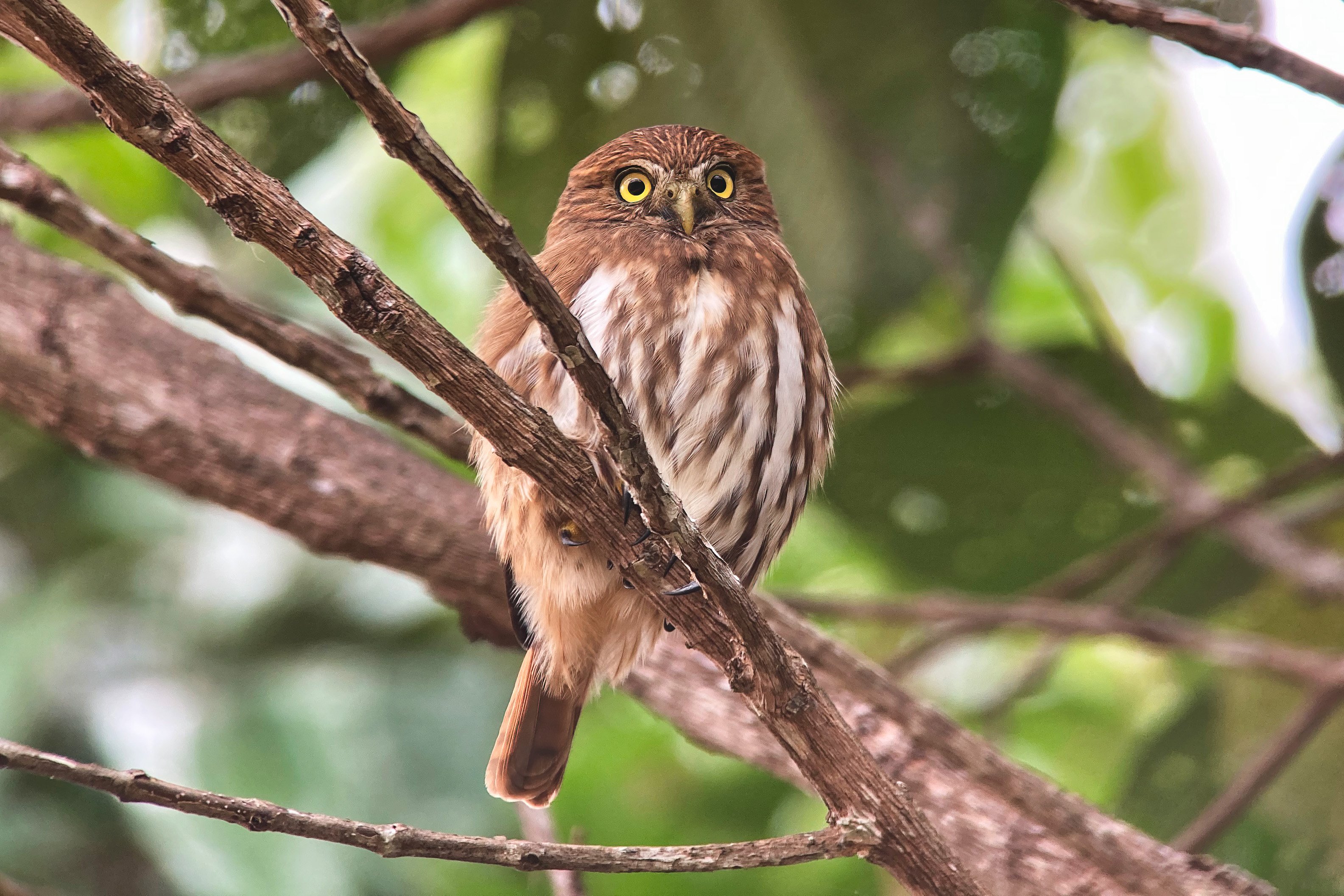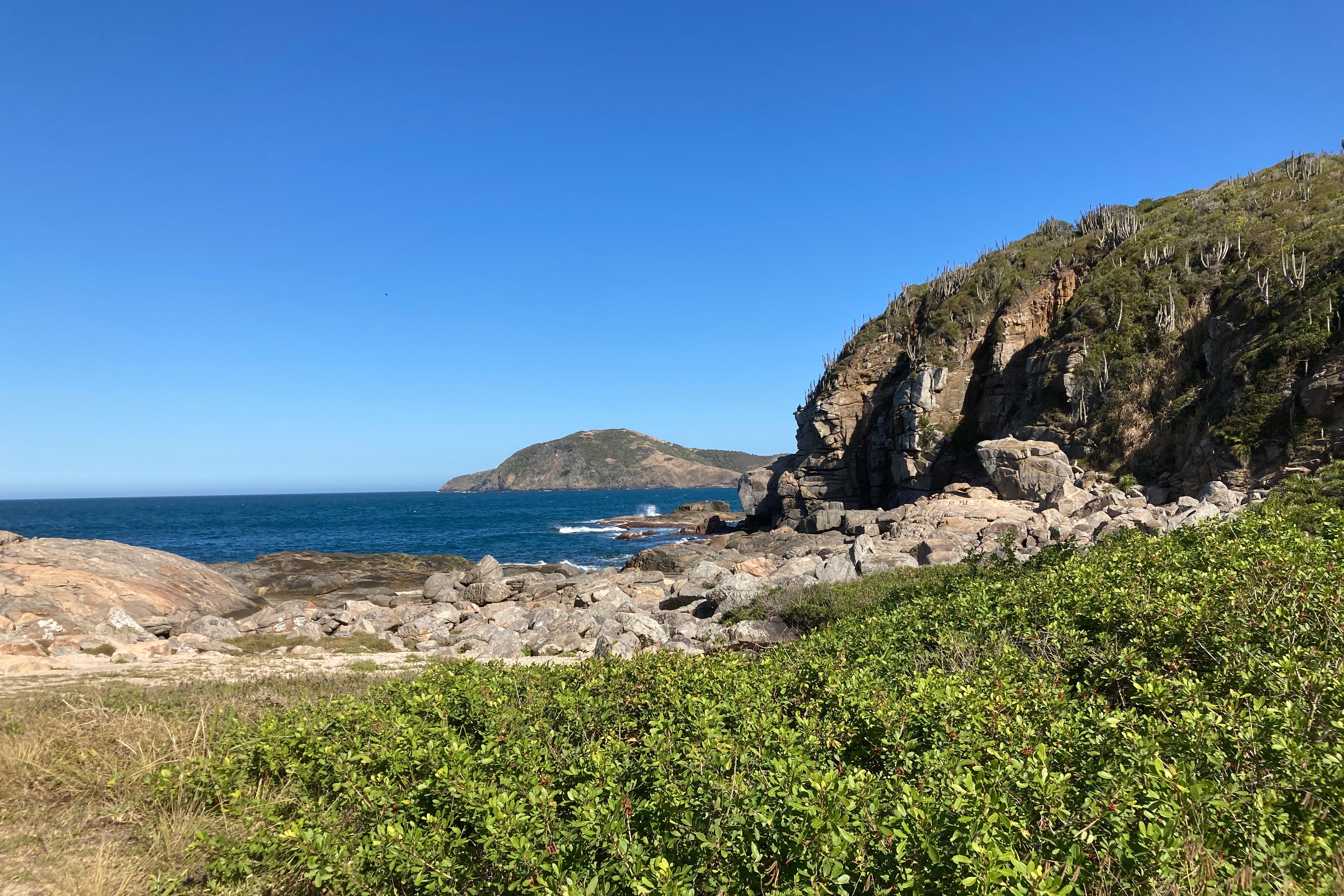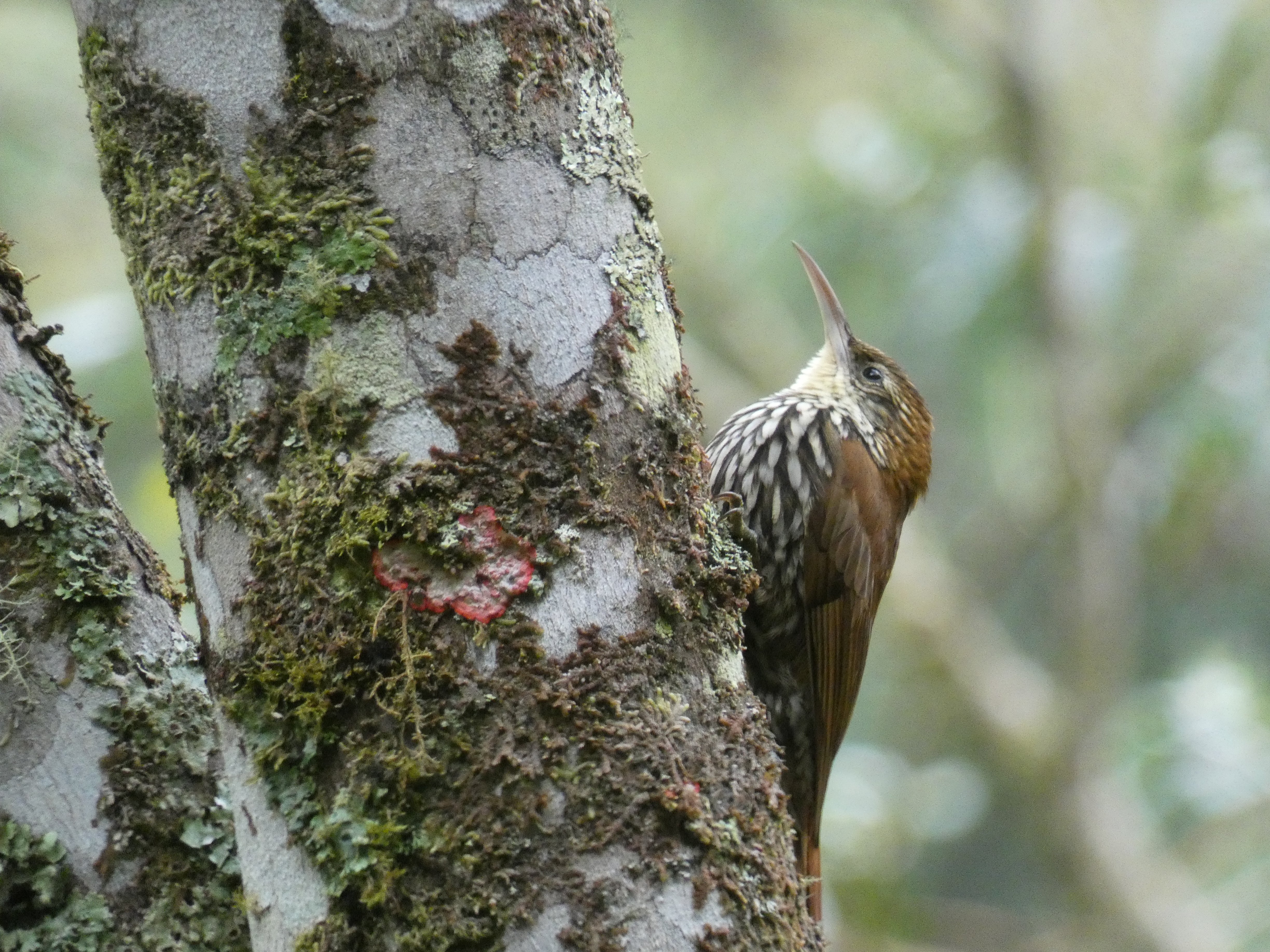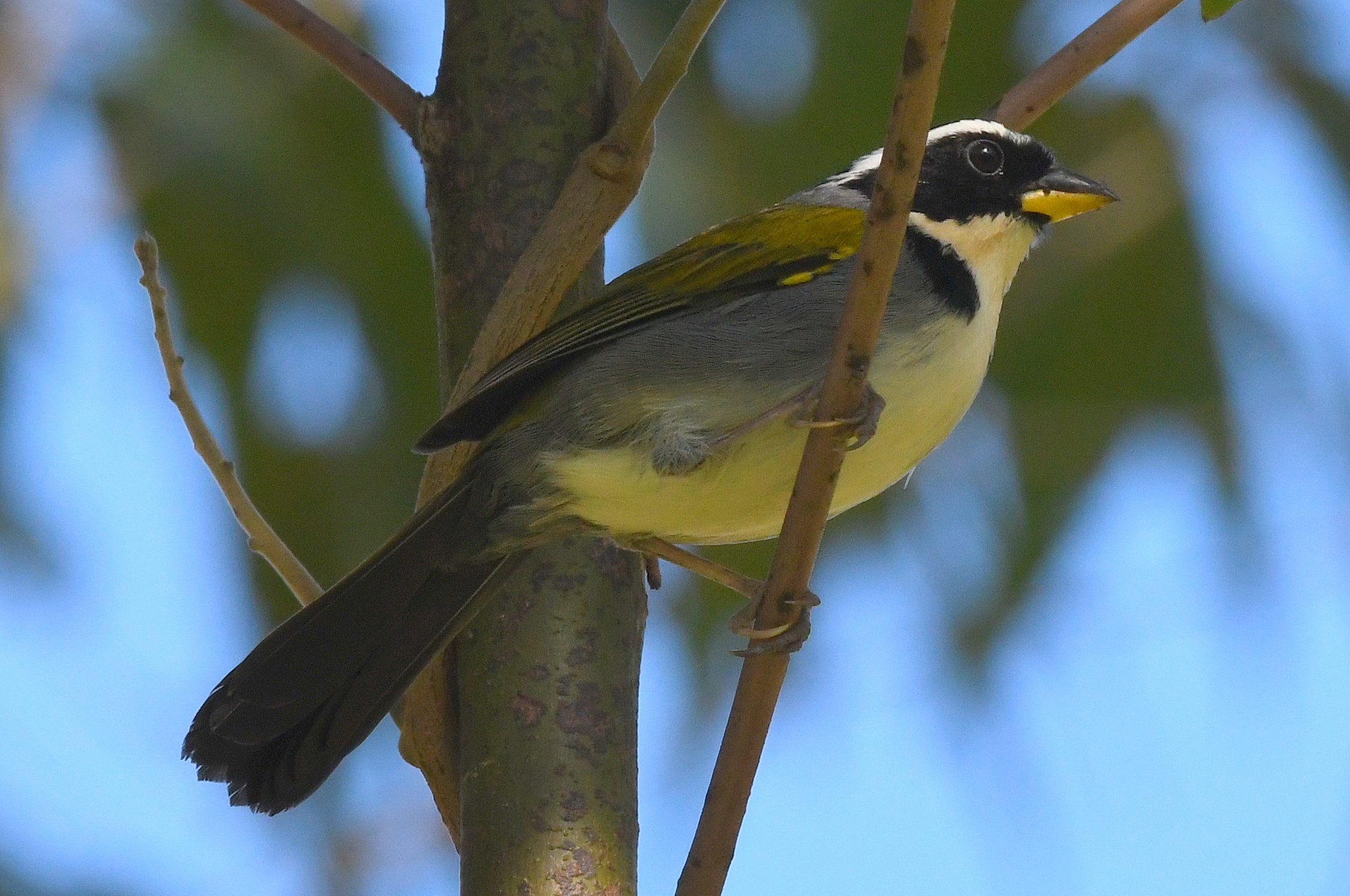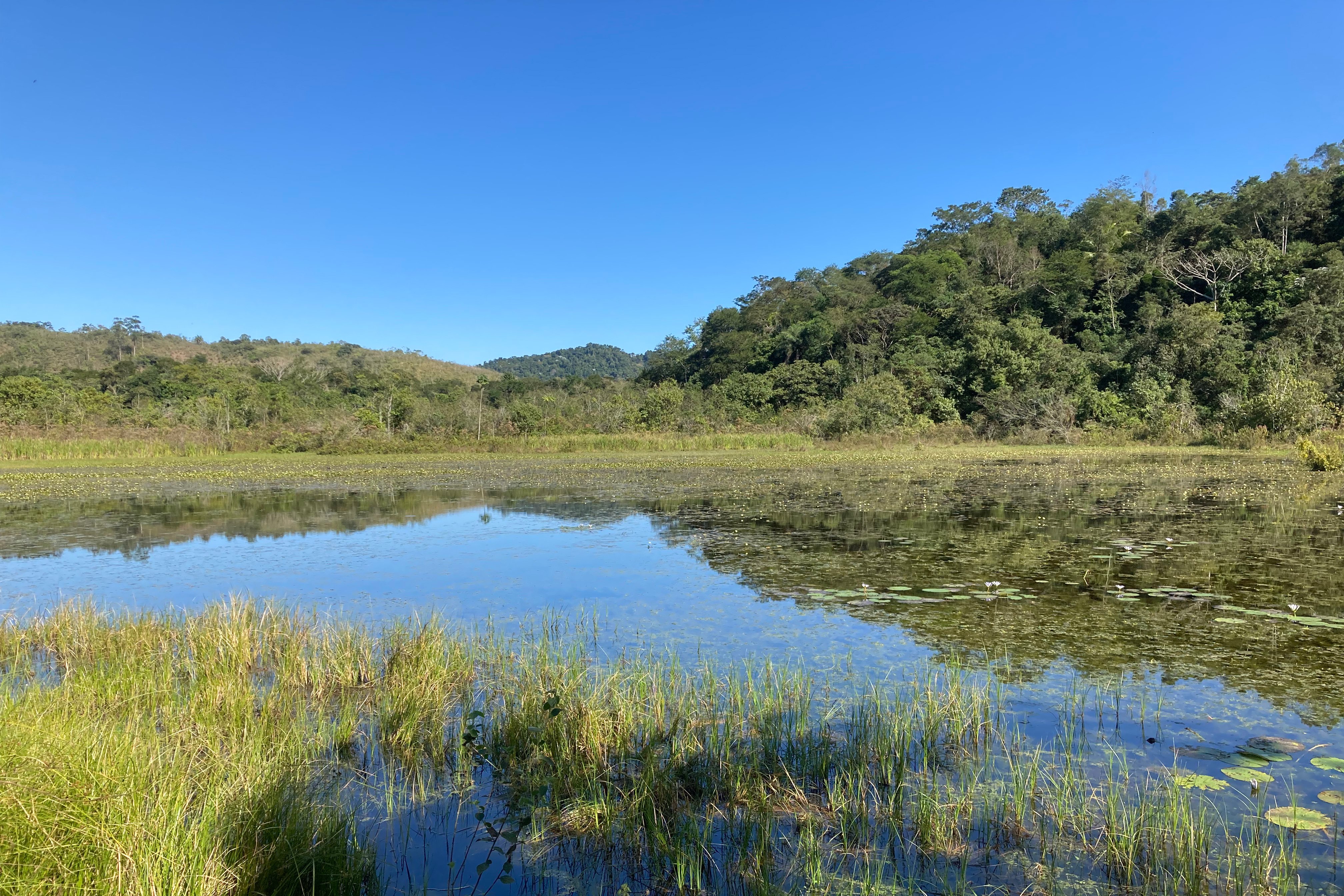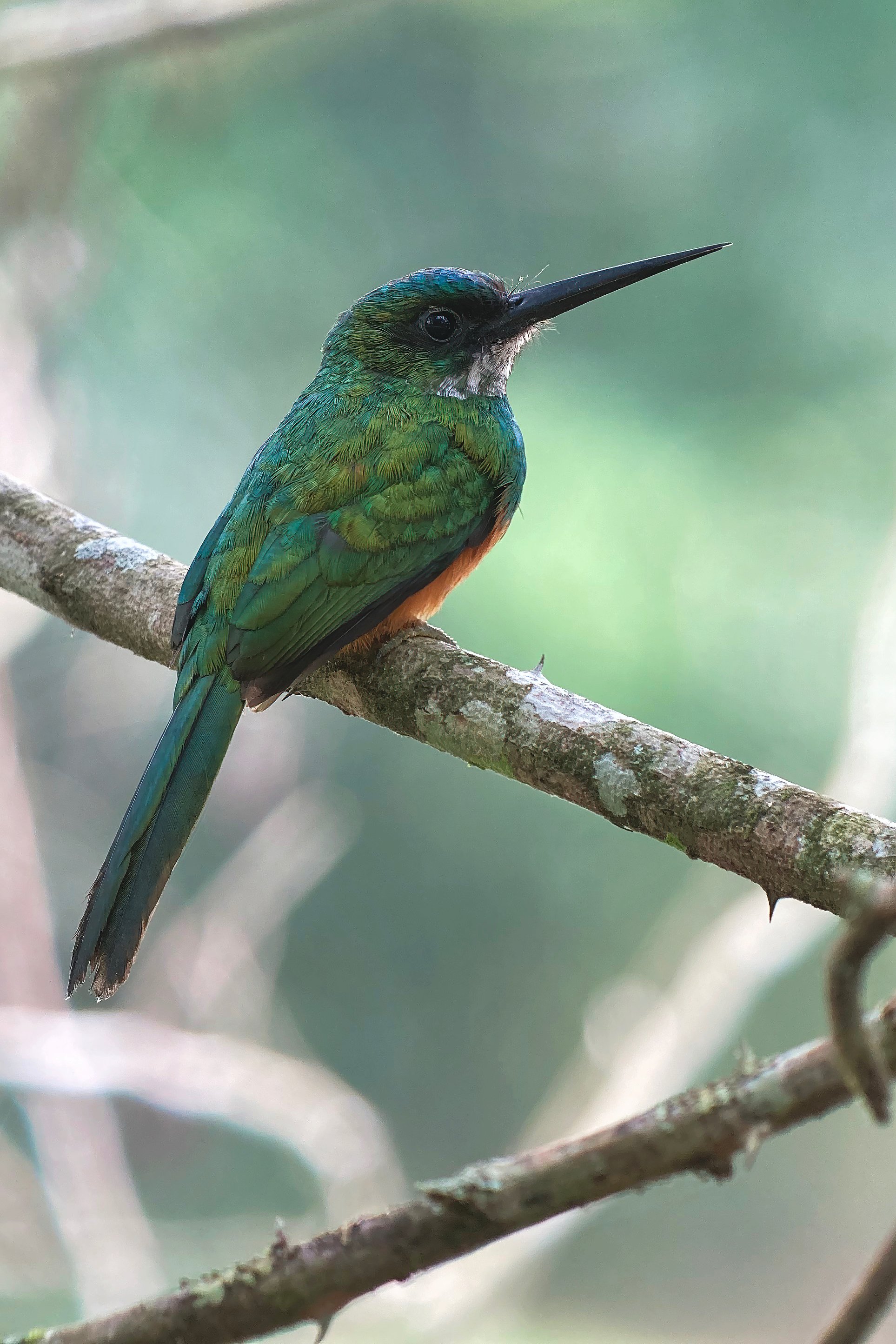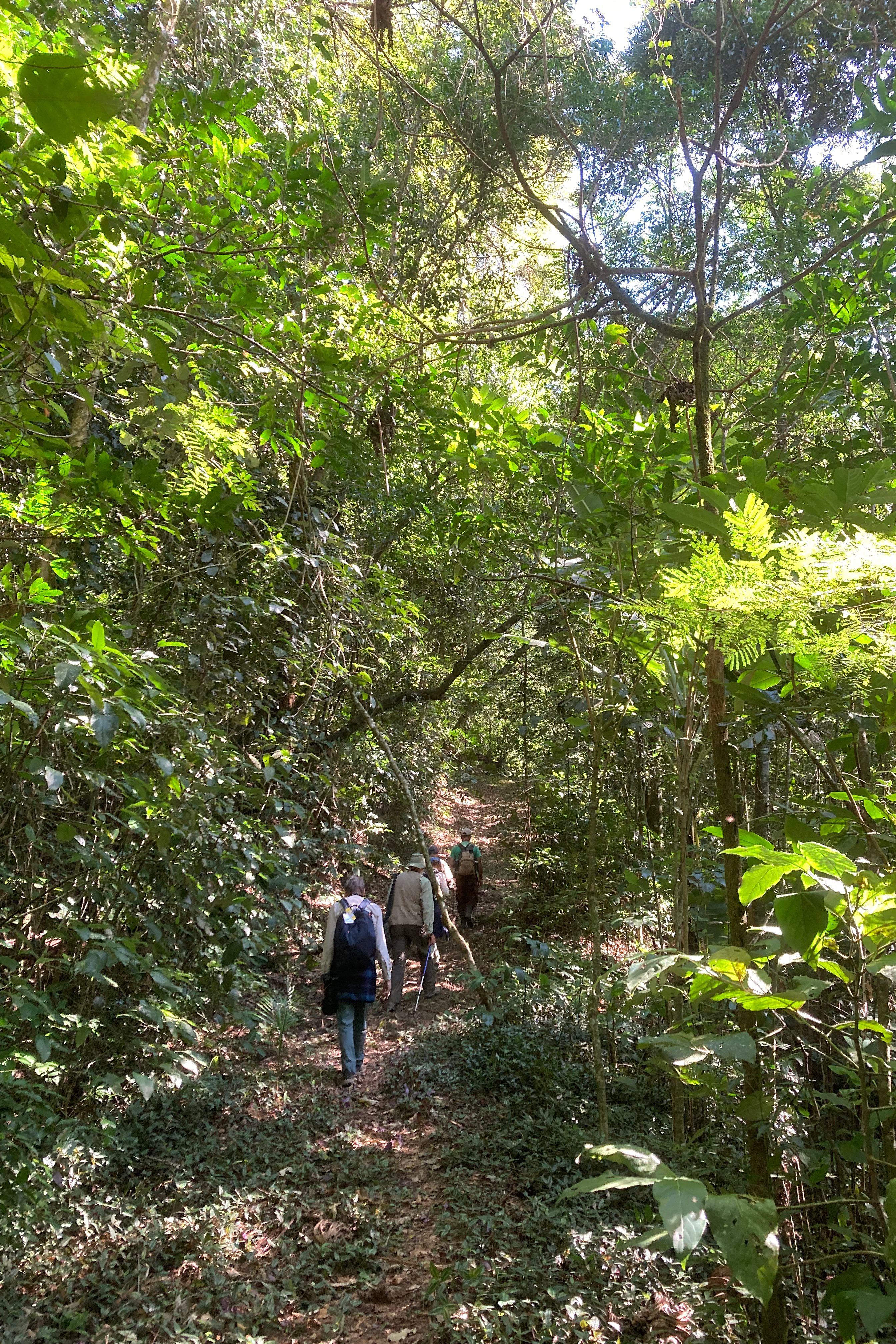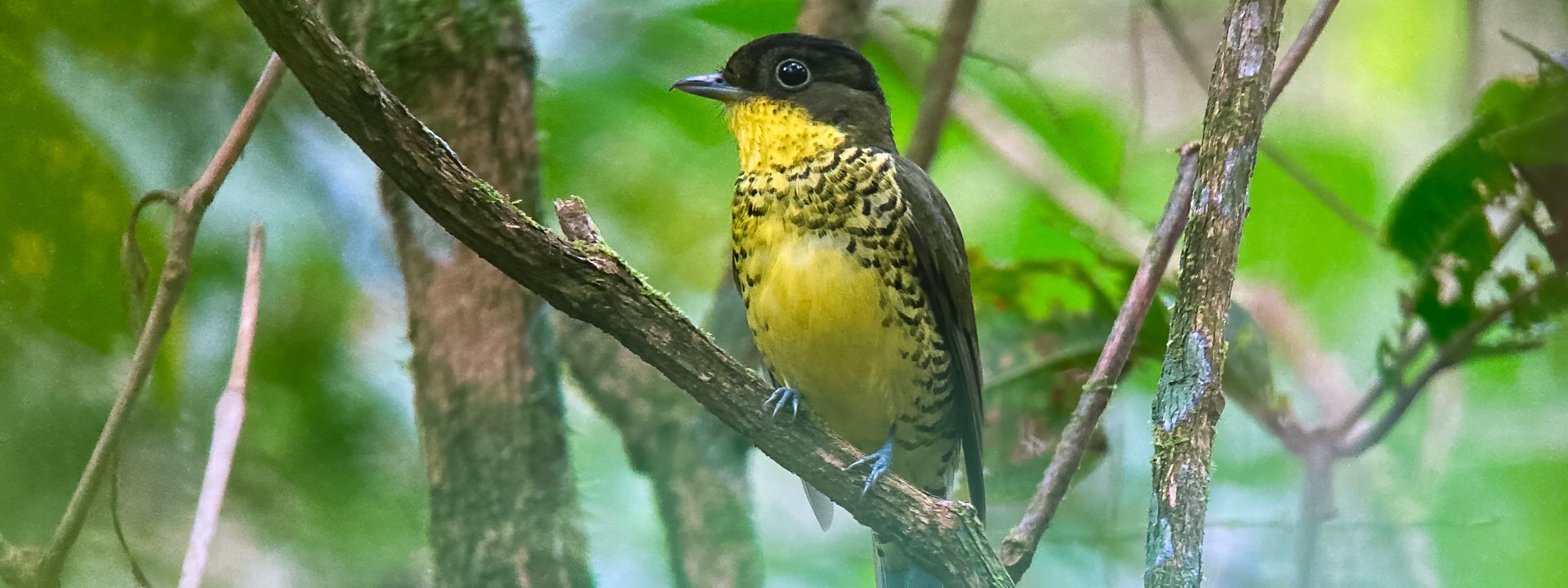Brazil
The Atlantic Rainforest
An 11-day, single-centre, small group birdwatching tour to Brazil
Limosa's birdwatching tour to the Brazilian Atlantic Rainforest is a single-centre holiday based at the excellent Reserva Ecológica de Guapiaçu (REGUA) in the coastal mountains north of Rio de Janeiro.
This area is outstanding for birds and there is a long list of Brazilian endemics and regional specialities to look for on this superb birding tour. Species we hope to find include the seldom seen Giant Snipe, near threatened Three-toed Jacamar and the stunning Green-crowned Plovercrest and Black-and-gold Cotinga. Other equally impressive possibilities include Bare-throated Bellbird, Brazilian Laniisoma and Azure-shouldered, Brassy-breasted and Brazilian Tanagers, along with a host of other birds.
Tour Dates & Prices
Tour Highlights
- Just 7% of Brazil’s extraordinary Atlantic rainforest remains
- North of Rio, the REGUA reserve provides a vital refuge for some of its rarest birds with possibilities including Giant Snipe, Brazilian Laniisoma, White-necked Hawk, Tawny-browed Owl, Bare-throated Bellbird, Saw-billed Hermit, Rufous-headed Tanager and Blue-winged Macaw
- Excursions to look for Three-toed Jacamar, Black-and-gold Cotinga, Green-crowned Plovercrest and Restinga Antwren
- Small group tour with a maximum of 8 participants
- Expertly led by Limosa's Frank Lambert and REGUA’s own resident, English-speaking Brazilian bird guides
Outline Itinerary
Fly overnight to Rio de Janeiro from where it is only a 90 minute transfer to REGUA, our base throughout the tour. Night at Guapiaçu Bird Lodge
Birdwatching at REGUA, plus three or four excursions to the dry forest near Carmo, the Serra dos Orgãos mountains and the Atlantic coast at Cabo Frio. Seven further nights at Guapiaçu Bird Lodge
We enjoy some final birding at REGUA before returning to Rio de Janeiro airport for our overnight flight back to the UK
Afternoon arrival in UK
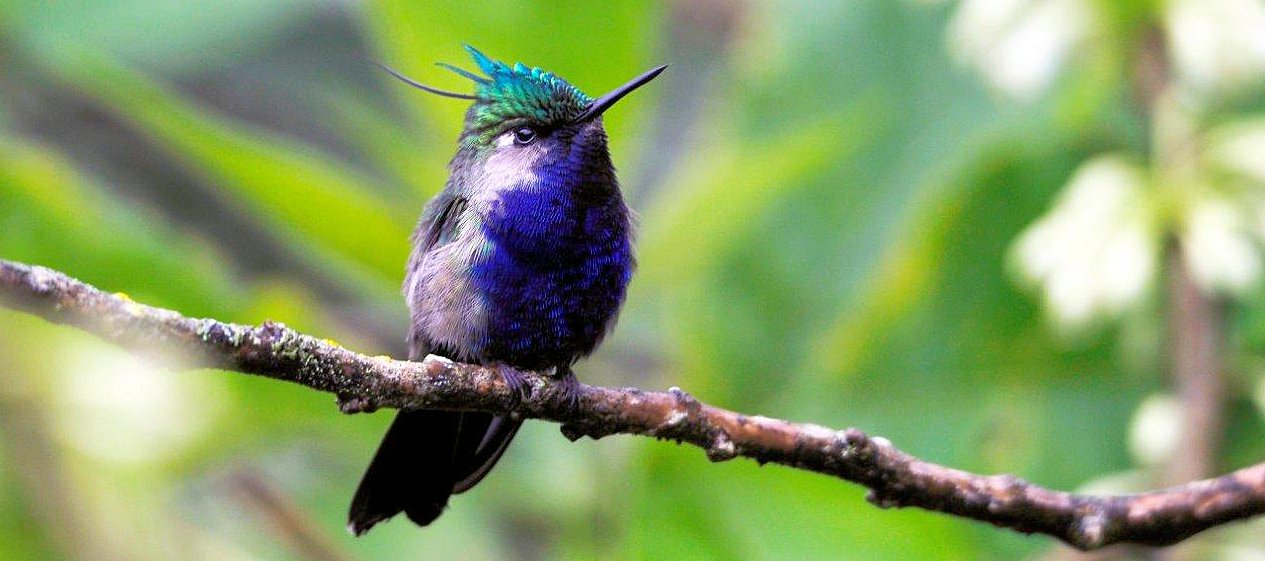
Brazil is a vast and truly fantastic country to explore for birds. Some of the most important areas outside of Amazonia are the coastal forests of the Southeast Highlands, north and east of Rio de Janeiro.
This region has been extensively deforested and just 7% of this extraordinary rainforest now remains but timely intervention has enabled protection of some of the best remaining refuges for birds. One of the finest of these is the Reserva Ecológica de Guapiaçu (or REGUA for short), which lies just 50 miles north of Rio.
Established in 2001, REGUA owns and administers an area of more than 18,000 acres, with a stated objective ‘to provide protection from hunting and exploitation of forest products’. This non-profit organisation is actively engaged in tropical forest restoration, including the planting of over 140,000 trees.
The Guapiaçu Bird Lodge offers comfortable accommodation run by welcoming and well-informed staff, with a superb selection of habitats right on the doorstep. As a single-centre tour, there can few better places to observe Atlantic rainforest bird species with a remarkable 460 species recorded in the region! In the lowland rainforest and wetlands, we will look for specialities such as Giant Snipe, Brazilian Tanager and the tiny Yellow-lored Tody-Flycatcher. We will also visit the Serra dos Orgãos mountains, whose peaks are more than 2000m above sea level. These are the sole refuge for many of the birds that are endemic to southeast Brazil, including Green-crowned Plovercrest and Black-and-gold Cotinga.
Walking the forest trails, birds can come thick, and fast as restless feeding flocks pass through the trees, bringing with them a good number of the Atlantic Forest endemics including the dazzling Brassy-breasted Tanager. There should also be a fabulous array of hummingbirds with Reddish Hermit and the endemic Brazilian Ruby amongst the possibilities.
The species make-up of the feeding flocks can vary according to altitude and even small pockets of forest can produce new and quite different species, so our stay will include trips further afield to ensure we encounter as wide a cross-section of birds as possible. Three-toed Jacamar, Crescent-chested Puffbird, Sharp-tailed Streamcreeper, White-bearded Antshrike and Spot-billed Toucanet are among many specialities we could find.
At the end of each exciting day in the field, we will return to our lovely lodge for a fine meal and the chance to relax with a refreshing lime Caipirinha, the traditional Brazilian cocktail.
Now extended to eleven days, our tour also allows time to visit the Atlantic coast near Cabo Frio, where Magnificent Frigatebirds patrol the beaches and Brown Boobies glide by offshore. There should also be a variety of terns and waders and we will explore the threatened restinga, a unique beach-scrub habitat that is home to the endangered Restinga Antwren, a subspecies of Serra Antwren which is found only in Rio de Janeiro State.
July is an excellent time for birding at REGUA. Being in the middle of the southern winter, the weather is likely to be sunny and warm, generally much more pleasant than in September and October. The number of species will be about the same as that expected on a visit later in the year: the July 2022 tour produced a record tally of 326 with over 300 species logged on our 2023 holiday. Although some species such as Swallow-tailed Cotinga and Frilled Coquette may be harder to find, others including the rare Brazilian Laniisoma, Rufous-capped Antthrush and Black-legged Dacnis are easier to see.
Limosa has been operating bird tours to Brazil since 1998 and our 2024 tour will be our 29th visit to this amazing destination. Guide Frank Lambert previously volunteered at REGUA.
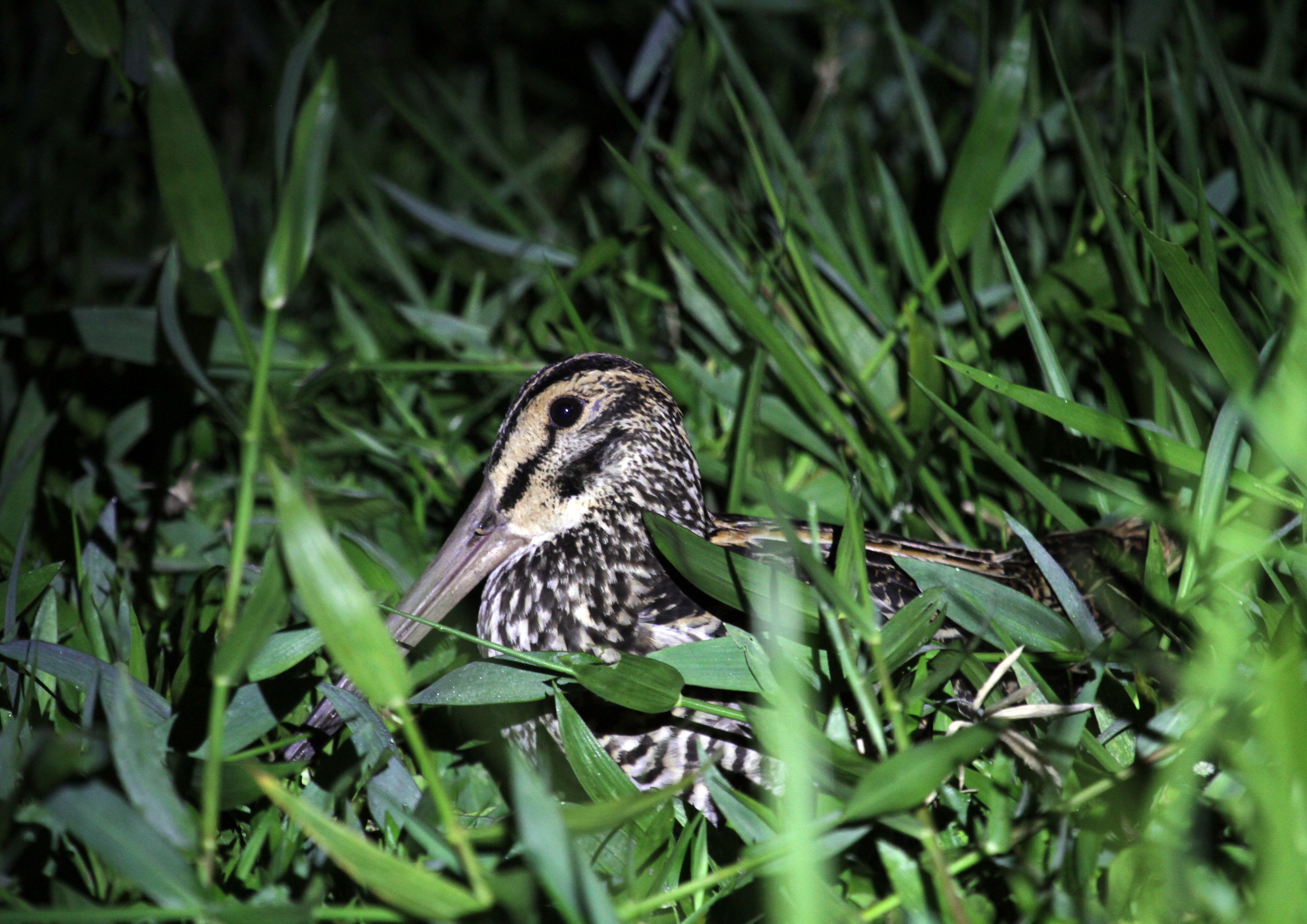
Days 1-2
FLY TO RIO DE JANEIRO, TRANSFER TO REGUA
Our birdwatching tour to Brazil's Atlantic Rainforest begins with an evening departure to Rio de Janeiro, where we arrive early the following morning.
Our driver will be waiting to welcome us and we head directly to the comfortable Guapiaçu Bird Lodge at the REGUA reserve, which will be our base throughout the holiday. The journey is relatively short taking approximately 90 minutes.
After time to unpack and enjoy lunch, we will begin our exploration of the grounds. Night Guapiaçu Bird Lodge, in the REGUA reserve
Days 3 – 9
BIRDING THE ATLANTIC RAINFOREST PLUS 3 OR 4 PLANNED EXCURSIONS TO THE DRY FOREST, MOUNTAINS AND COAST
We awake to an unfamiliar dawn chorus and more Brazilian birds! The Reserva Ecológica de Guapiaçu (home of the Guapiaçu Bird Lodge) boasts a fantastic variety of habitats and species, and our first walk will be a gentle introduction to the local birds. Adjacent to the lodge are several hummingbird feeders and Swallow-tailed Hummingbird, Glittering-throated Emerald, Violet-capped Woodnymph and Rufous-breasted Hermit should all be present, with the trees around the lodge often holding Ferruginous Pygmy and Tropical Screech Owls, Channel-billed Toucan, Scaly-headed Parrot and the endemic Brazilian Tanager amongst many others.
We will take a short walk from the lodge down to where Caiman and Capybaras live in a recently created wetland. White-faced Whistling Duck, Masked Duck, Rufous-tailed Jacamar, Blond-crested Woodpecker, Limpkin and a trio of kingfishers (Ringed, Amazon and Green) are among many exciting birds to look for here. Capped, Cocoi and Rufescent Tiger Herons stalk through the shallows and we may be lucky to spot a Rufous-sided Crake or Blackish Rail, although the latter is a notoriously tough species to see well!
We will keep our eyes and ears open for the unusual looking White Woodpecker and large Orange-winged Amazon, along with Cobalt-rumped Parrotlet, White-collared Swift, Red-cowled Cardinal, Chestnut-backed Antshrike, Yellow Tyrannulet, Black-capped Donacobius, Yellowish Pipit, White-bellied Seedeater, Chestnut-capped Blackbird and Band-tailed Hornero. We should also find more Atlantic Forest endemics, such as Yellow-lored Tody-Flycatcher and Long-billed Wren.
One of the real joys of this single-centre tour is that we can keep our programme flexible to allow for any vagaries of weather, but our stay will always include birding in the nearby forest and wetlands, as well as some excursions further afield by minibus.
We will devote plenty of time to exploring REGUA’s quiet forest trails and on one day will explore the Waterfall (Green) Trail, passing through lowland rainforest that has grown up over the past sixty years to cover the scars of previous clearance.
Flowers along the trail should produce the endemic Saw-billed Hermit and we could also encounter the gorgeous Blue Manakin or perhaps a Rufous-breasted Leaftosser. Stands of bamboo conceal the skulking Slaty Bristlefront, as well as furtive antshrikes and antwrens. The secretive Rufous-capped Motmot watches from steep-sided slopes and, where the path passes through small clearings, we will pause to check for Spot-billed Toucanets and listen to the loud, clanging song of Bare-throated Bellbirds echoing through the canopy.
As we continue to explore the Atlantic Forest, new specialities should begin to appear with Star-throated Antwrens scolding from the undergrowth and the distinctive song of the localised Sooretama Slaty Antshrike will give the bird away as it moves through the vine tangles above us. Feeding flocks could bring us the beautiful but unobtrusive Pin-tailed Manakin (another Atlantic Forest endemic), Surucua Trogon, Spot-breasted Antvireo, Streak-capped Antwren, Olivaceous Woodcreeper, as well as the stunning Green-headed, Brassy-breasted and Red-necked Tanagers.
The Brazilian Laniisoma (aka Elegant Mourner or Shrike-like Cotinga) is something of a REGUA speciality and we will make a special effort to find this tricky bird while also seeking Scaled Antbird, White-shouldered Fire-eye, Southern Antpipit, Grey-hooded Attila and the striking Black-cheeked Gnateater.
On one evening we will head to local fields and, as dusk falls, search for Giant Snipe. We hope to hear its distinctive calls and see it ‘roding’. If we are really fortunate our guide may find one for us to see on the ground!
On one day, we plan to make an excursion to the Pico da Caledonia, one of the highest peaks in the Serra dos Orgãos Mountains. The track soars to 2,219m (7,278ft) and on a clear day, the views are spectacular. As the road climbs, we will listen for the whistles of Black-and-gold Cotinga, another Atlantic Forest endemic. These montane forests are also one of only two known sites for the extremely rare and elusive Grey-winged Cotinga and, on some occasions, our groups have enjoyed fantastic views.
If we are lucky, we may find the amazing Green-crowned Plovercrest performing at its lek and other ‘hummers’ to look for include White-throated Hummingbird and the endemic Brazilian Ruby.
With patience, we may find some of the Serra’s more secretive forest dwellers such as Mouse-coloured Tapaculo, Large-tailed Antshrike, Rufous-tailed Antthrush and both Rufous-tailed and Dusky-tailed Antbirds which inhabit the densest undergrowth and are much easier to hear than to see! Other species to look for in the mountains include Rufous Gnateater, Blue-billed and Velvety Black Tyrants, Shear-tailed Grey Tyrant, Serra do Mar Tyrant-Manakin, the recently split Grey-eyed Greenlet, the violet-blue Diademed Tanager, Bay-chested Warbling Finch and Thick-billed Saltator.
We also plan to make an early morning excursion to Macaé de Cima, an area of montane forest reaching an elevation of around 1400m, where we will investigate several different altitudes. Our birding is generally along a dirt road, and we will make regular stops to check for feeding flocks of tanagers and other species.
Along the trail, we may find Black Hawk-Eagle, White-rimmed and Golden-crowned Warblers, Rufous-browed Peppershrike, perhaps a smart Yellow-browed Woodpecker or the amazing White-bearded Antshrike. Rufous-backed Antvireos may be found alongside several ‘humbug-like’ antbirds such as Bertoni’s and Ochre-rumped or perhaps we will be lucky and find Rufous-capped and Pallid Spinetails, Sharp-billed Treehunter, Orange-eyed Thornbird, White-browed Foliage-gleaner or even a Cinnamon Tanager or two. Birds can come thick and fast in this rich habitat!
One of the few remaining remnant patches of Atlantic dry forest exists beyond the Serra dos Órgãos and although degraded, this habitat is a stronghold of the near threatened Three-toed Jacamar. We have an excellent chance of seeing this plus many other species on a trip that will take in a variety of ‘new’ habitats including remnant patches of dry forest and open grassy plains.
Much of our birding on this occasion will be done by roadside stops and we will look for the superbly named Firewood-gatherer, Curl-crested Jay and Streamer-tailed Tyrant plus various raptors including Lesser Yellow-headed Vulture, White-tailed Hawk and, if we are very lucky, Chaco Eagle.
The key bird, however, is the Three-toed Jacamar. We search for this near threatened species along a hilltop trail. Other possibilities here or nearby include Red-legged Seriema, Toco Toucan, Crescent-chested and White-eared Puffbirds, Serra Antwren, Rufous-fronted Thornbird and the tiny, bright-olive Hangnest Tody-Tyrant! Yet more ‘new’ hummingbirds could include Sapphire-spangled and Glittering-bellied Emeralds.
Our Brazil itinerary now includes an extra day, enabling us to visit somewhere ‘completely different’ and, following another early breakfast, we plan to drive to the coast near the town of Cabo Frio. Only found in this corner of Brazil, little now remains of the special restinga habitat which grows here as this is severely threatened by clearance for beachfront development.
This is, however, home to the unique Restinga Antwren (a subspecies of Serra Antwren) and we will hope to find this small bird as we explore the coastal sand, scrub, and cacti of the unique restinga. Other possibilities here include Black-backed Tanager, Tropical Mockingbird, Short-crested Flycatcher, Lemon-chested Greenlet and Tropical Parula.
Small roadside pools and saltmarsh can hold good numbers of White-backed Stilt, White-cheeked Pintail, Little Blue Heron and the oddly 'ugly' Roseate Spoonbill, a bird which looks much more beautiful in flight than when seen up close! Kelp and Grey-hooded Gulls are often present, Royal and Cabot’s Terns allow good comparison, and we may find a Yellow-billed Tern or Black Skimmer. Offshore Brown Boobies plunge like Gannets for fish and another highlight is the huge and 'Pterodactyl-like' Magnificent Frigatebirds that cruise menacingly overhead.
Given the timing of our tour, most migrant shorebirds will, of course, still be much further north, but careful scanning might produce Greater and Lesser Yellowlegs, Hudsonian Godwit or Semipalmated Plover.
All in all, your stay with Limosa and the friendly staff at REGUA offers an unrivalled opportunity to enjoy a wide cross-section of the birds of Brazil’s unique but severely threatened Atlantic Rainforest habitat. We have minimal driving on the days we explore our local area, although there is inevitably a fair bit of travelling to explore the wonderfully varied areas further afield.
Anyone with the slightest ambition with a camera should find plenty of chances to take some great photos! Seven further nights at the Guapiaçu Bird Lodge in the REGUA Reserve
Day 10
REGUA AND RIO DE JANEIRO, FLY TO UK
Our flight home is likely to depart Rio in the late afternoon so we should be able to enjoy some final morning birding at REGUA, followed by an early lunch. We will then bid a reluctant farewell to our hosts and drive back to Rio in good time to check-in for our overnight flight back to the UK.
Day 11
ARRIVAL IN LONDON
Morning arrival in the UK where our Brazil birdwatching tour concludes.
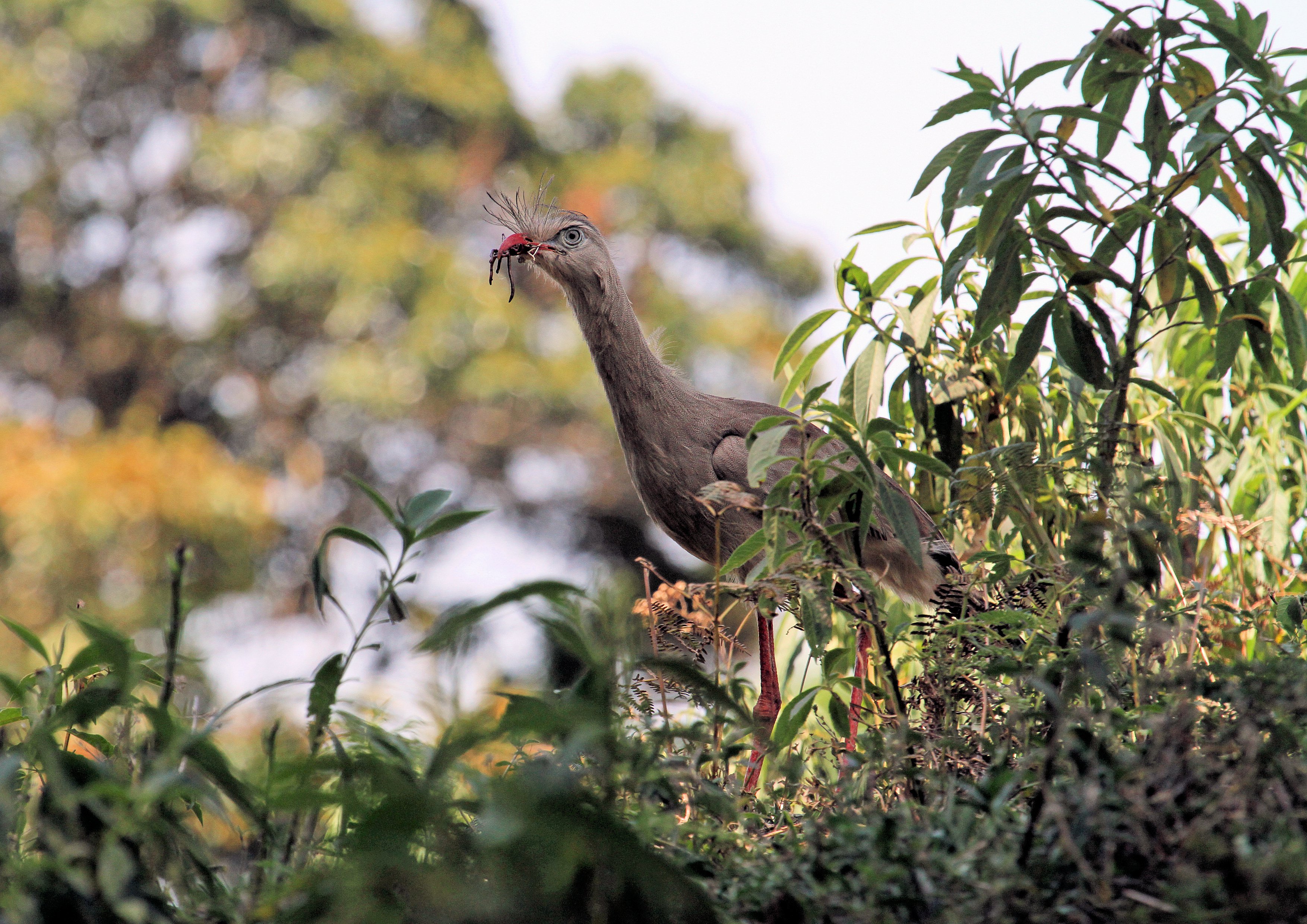
WHAT TO EXPECT
After more than 20 visits, we have found Brazil to be a delightful and rich birding destination and we are confident you will agree! We will make early starts each day to make the most of the mornings when birds are likely to be at their most active.
Lunch may be taken back at the lodge or as a picnic in the field, depending on our plans for that day.
We often take a short break after lunch, before going out again for the remainder of the afternoon.
We return to the lodge each evening for caipirinhas, dinner and overnight.
Birds 270-330 species.
Accommodation 8 nights’ accommodation at the Guapiaçu Bird Lodge (REGUA) which offers comfortable guest rooms with private facilities and great birding right on site!
The lodge is equipped to a high standard with a spacious and comfortable lounge, a large dining area, an excellent library, a small swimming pool and hot water heated by solar power.
A laundry service is available for a small fee. Please note, however, that clothes are dried on a line so drying times are entirely weather dependent!
The lodge is small, with a relaxed and informal atmosphere, and is set against a fabulous backdrop of forested mountains. It has beautifully maintained gardens which provide superb birding and photographic opportunities from the veranda.
Fruit feeders attract noisy groups of euphonias, chlorophonias and a whole range of ‘rainbow coloured’ tanagers including Hooded, Ruby-crowned, Brazilian, Sayaca, Palm, Yellow-backed, Green-headed and Burnished-buff.
On the hummingbird feeders, Swallow-tailed Hummingbirds fight off Rufous-breasted Hermits, Violet-capped Woodnymphs and Glittering-throated Emeralds.
Around the gardens, Orange-winged Amazon, Guira Cuckoo, Ferruginous Pygmy Owl, Rufous-tailed Jacamar, Crescent-chested Puffbird, Channel-billed Toucan, White and Blond-crested Woodpeckers, Chestnut-backed Antshrike and Long-billed Wren are among the birds which are often present, while at night Tropical Screech Owl and Pauraque may be heard while sipping a cool lime Caipirinha, the traditional Brazilian cocktail.
Meals All main meals are included in the tour price commencing with lunch on arrival at the lodge on Day 2 and concluding with lunch on Day 10.
Home-cooking, with local freshly prepared dishes by the lodge’s own cooks (vegetarian needs can also be catered for).
Breakfasts and dinners will be at the lodge, whilst some lunches will be picnics. Soft and alcoholic drinks are available for purchase at the lodge.
Walking Easy to moderate, chiefly along forest trails. There are some steeper, uphill stretches in the mountains, but all are taken at a very gentle pace with regular stops for birds. Where appropriate, we will drive to the top and walk down. Sturdy waterproof walking shoes or lightweight boots with good grip are recommended, whilst wellies are useful when looking for Giant Snipe.
Maximumelevation on thistour: 2200m/7200ft (for a couple of hours only).
Weather Tropical climate, mainly warm and sunny with rainfall always possible. July is one of the driest months of the year. We can anticipate temperatures ranging from 14-27C (57-81F) in the lowlands and cooler conditions in the mountains.
Flights Despite the end of pandemic restrictions, we have taken the decision to continue to price our holidays as excluding international flights.
To keep the process as simple as possible, we are working very closely with a dedicated agent at Travel Counsellors, Sacha Barbato, who is essentially now our “in house” flight consultant.
Sacha will be able to advise you which flights we are recommending for each holiday, and he will be able to book these for you.
GroundTransport By minibus on the longer excursions and a 4WD vehicle when occasion demands.
Insects We may encounter mosquitoes on some trails but there is no malaria risk on this tour, however, clients should always consult their GP practice for upto date medical advice.
Photos Good to excellent photographic opportunities in more open habitats, including wetlands, at bird feeders and around the lodge.
Photographing birds in the forest, however, can be more challenging as light levels are often lower.
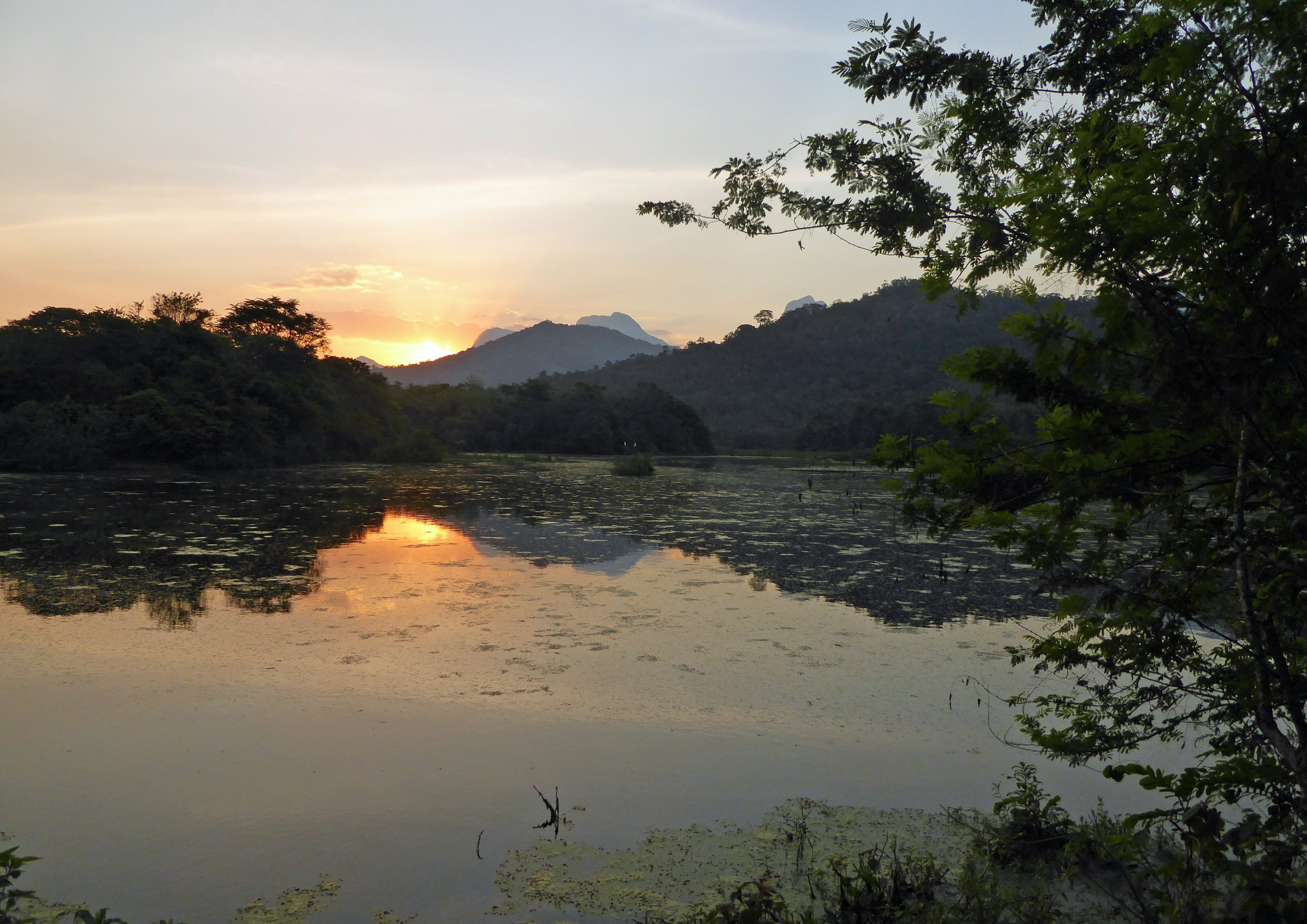
Tour Gallery
View a gallery of images for this tour below, click on an image to view as full size with caption
